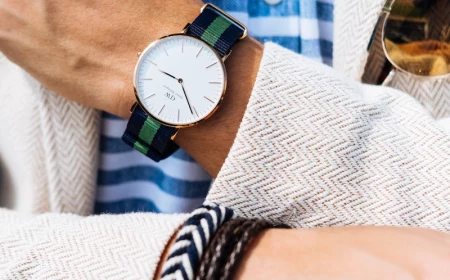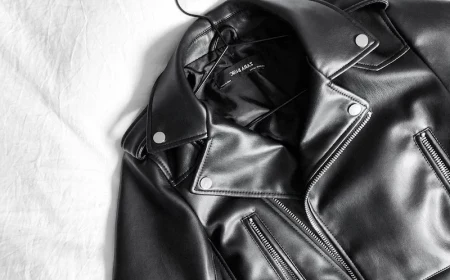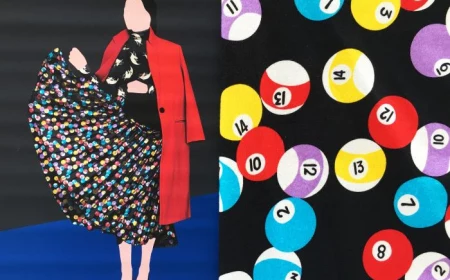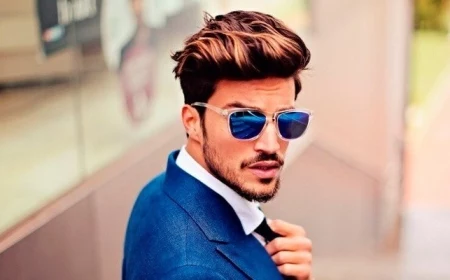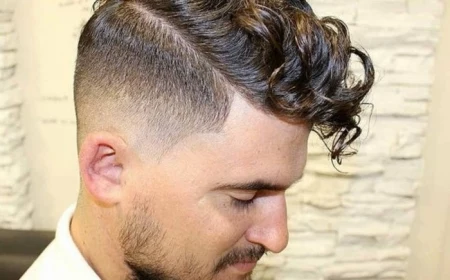Business Casual Doesn’t Have to Be Confusing: A Real-World Guide to Looking Good
I’ve spent years helping guys figure out what to wear, from recent grads buying their first real blazer to executives dialing in their personal style. And honestly, no term causes more headaches than “business casual.” It’s not some strict uniform, which is what makes it so tricky. It’s more of a sliding scale that depends on your city, your industry, and even your specific office vibe.
In this article
Getting it right is less about chasing trends and more about getting the fundamentals down. A lot of guides just throw a bunch of outfit photos at you without explaining the why. My goal is different. I want to give you the building blocks to put together a wardrobe that just works, based on three pillars: fit, fabric, and function. Once you get these, you’ll be able to dress with confidence, no matter what the day throws at you. This isn’t about a massive shopping spree; it’s about making smarter choices that will pay off for years.
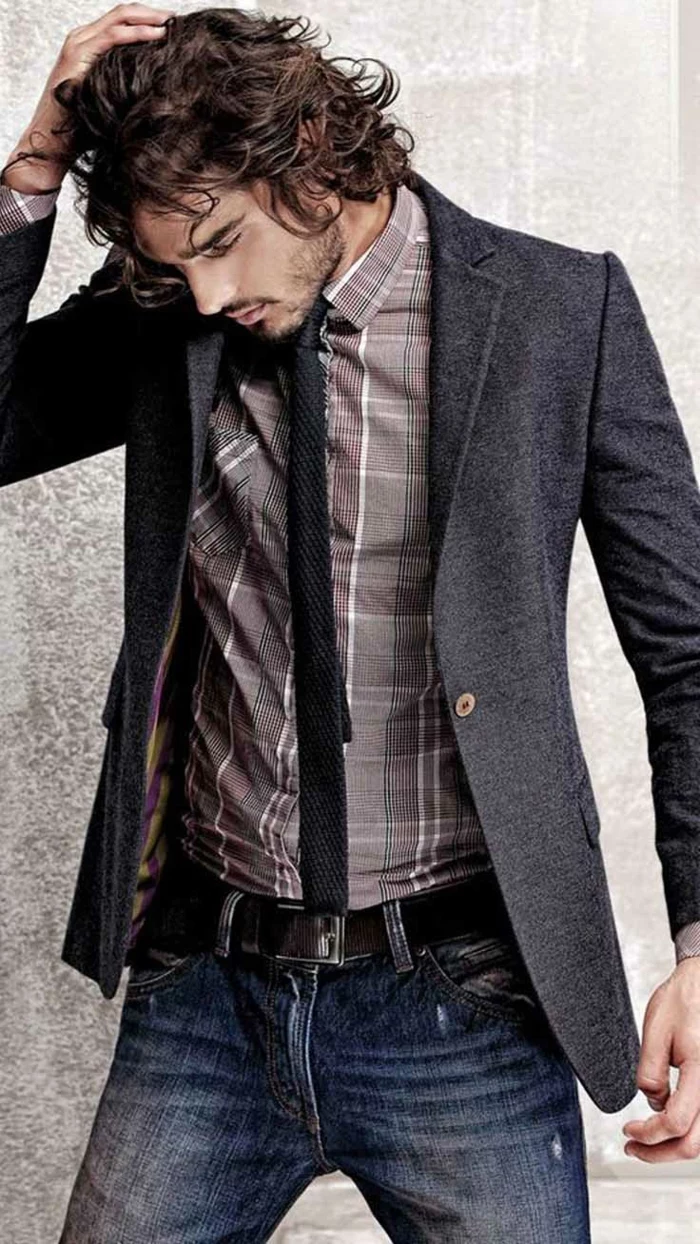
It All Starts with the Fabric
The way your clothes feel, perform, and look begins with the material. It’s the first thing I talk about with clients because it dictates everything—comfort, how long it’ll last, and how dressy it looks. Just knowing the basics will make you a much smarter shopper.
The Go-To Natural Fibers
Wool: The Unsung Hero of Your Closet
Let’s get one thing straight: wool isn’t just for winter. Its biggest strength is its incredible versatility. The fibers have this natural crimp that creates tiny air pockets, which is why it’s a great insulator when it’s cold. But in the heat, it wicks moisture away from your skin, keeping you surprisingly cool and dry. It’s also fantastic at resisting wrinkles. You can wear a wool blazer all day, hang it up overnight, and most of the wrinkles will just… fall out. It’s pretty amazing.
When you’re looking at wool, you’ll see a few types. Merino wool is super fine and soft, perfect for sweaters you wear right against your skin. Worsted wool is the smooth, durable stuff that most quality suits and dress trousers are made from. For a more relaxed, textured vibe—think sport coats and fall trousers—you’ve got woolen fabrics like tweed and flannel.
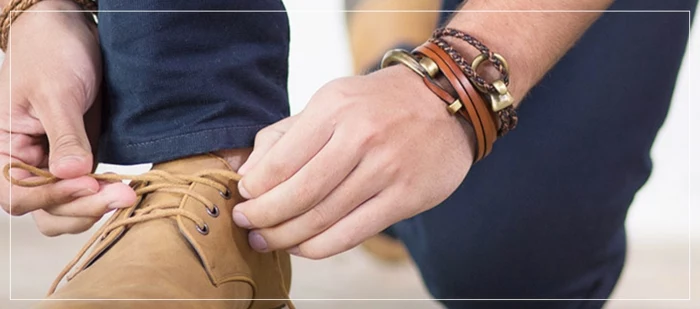
Cotton: The King of Casual Shirts and Pants
Everyone knows cotton, but how it’s woven completely changes its personality, especially in shirts. You’ll mainly run into three types:
- Oxford Cloth: This has a basketweave texture that makes it a bit beefier and more casual. An Oxford Cloth Button-Down (OCBD) is a true classic for a reason. It’s durable and effortlessly cool.
- Poplin: This is a much smoother, lighter, and crisper fabric. A poplin shirt feels a little dressier and is great for warmer days or for layering under a blazer.
- Twill: You can spot twill by its faint diagonal pattern. It’s soft, drapes really well, and tends to resist wrinkles a bit better than poplin. Herringbone is a popular style of twill you’ve probably seen.
For pants, cotton twill is what chinos are made of. Quick tip: The weight of the fabric is a huge clue to its quality. A flimsy, lightweight chino will look rumpled and sad after just a few hours. When you’re shopping, actually feel the fabric. A heavier twill will hold its shape and last way longer. You can find solid options from brands like J.Crew or Uniqlo that won’t break the bank.

Linen: The Specialist for Hot Weather
Made from the flax plant, linen is a lifesaver in serious heat and humidity. Its hollow fibers let air pass right through. But let’s be real, it has one major downside: it wrinkles if you so much as look at it. Some people dig that rumpled, relaxed charm. My advice? Either lean into it for very casual situations or, even better, look for a wool/linen or cotton/linen blend. You get a lot of the cooling benefits with way better wrinkle resistance.
Building Your Color Palette
Your wardrobe needs a strong base of neutral colors. They’re easy to mix and match and always look professional. The big three are:
- Navy Blue: It just projects confidence and trustworthiness. A great navy blazer is probably the single most versatile item a guy can own.
- Grey: This is the ultimate neutral. Mid-grey trousers go with literally everything. Charcoal is more formal, light grey is more casual.
- Brown and Tan: Earth tones feel approachable and grounded. Tan chinos are a business casual must-have, and brown leather shoes are often more useful than black for this style of dress.
Start with these colors for your core pieces—blazers, trousers, shoes. Once that foundation is solid, you can start having fun with accent colors and patterns in your shirts and accessories.
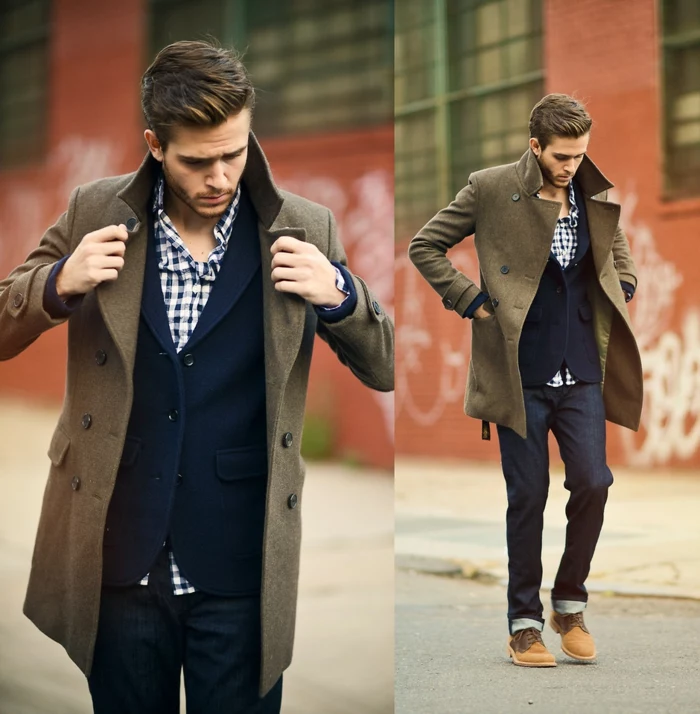
The Golden Rule: Fit is Everything
I can’t possibly say this enough: fit is more important than price, brand, or fabric. A $100 jacket that fits you perfectly will look a thousand times better than a $1,000 designer one that’s too big in the shoulders. I’ve seen guys completely transform their look just by taking their existing clothes to a good tailor.
The Key Fit Checkpoints
The Shoulders: This is the one thing you have to get right off the rack. The seam on a jacket or shirt should end precisely at the edge of your shoulder bone. If it’s drooping over, it’s too big. If it’s pulling, it’s too small. This is a very difficult and expensive alteration, so make it your top priority when you’re trying things on.
The Torso: When you button your blazer, it should gently contour to your shape. You should be able to slide a flat hand in, but that’s it. If you see a big, ugly ‘X’ of wrinkles pulling from the button, it’s too tight. If it just hangs like a box, it’s too big. The good news? A tailor can easily take in the waist, and it makes a world of difference.
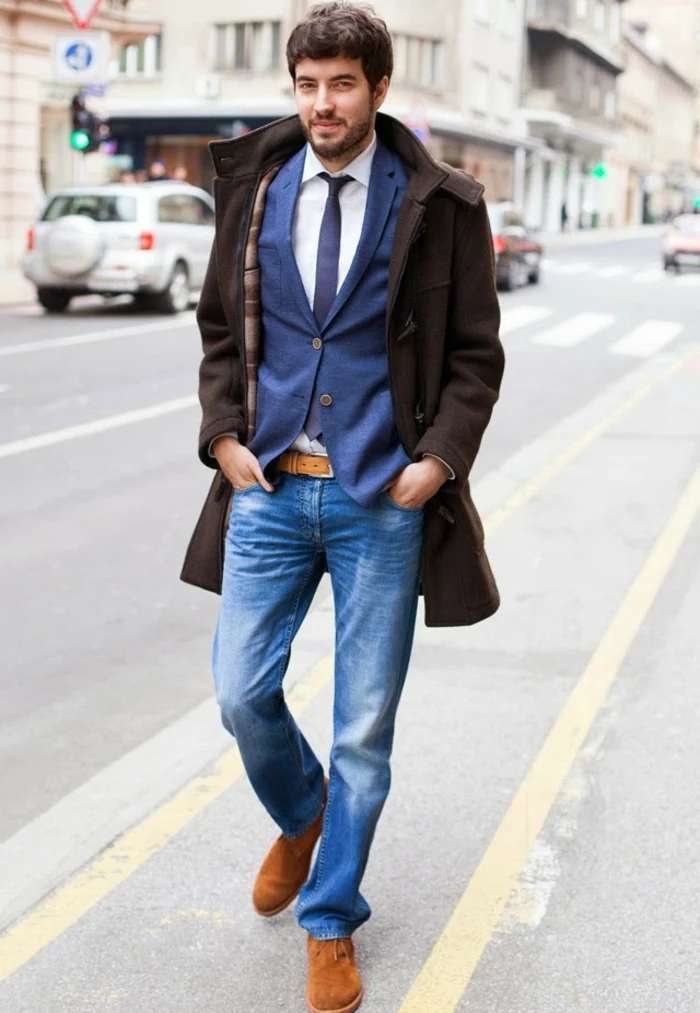
Sleeve Length: This is such a small detail, but it separates the pros from the amateurs. Your jacket sleeve should end just above your wrist bone, showing about a quarter to a half-inch of your shirt cuff. Your shirt cuff itself should end right where your hand meets your wrist. It creates a sharp, intentional look.
Trouser Length (The ‘Break’): The ‘break’ is just the little fold of fabric that hits the top of your shoes. There are a few styles:
- No Break: The hem just grazes the top of your shoe. It’s a very clean, modern look.
- Slight Break: A single, subtle fold. This is the sweet spot—timeless, versatile, and pretty much always appropriate.
- Full Break: A much bigger fold. It’s a very traditional look that can easily look sloppy, especially on shorter guys.
When in doubt, aim for a slight break. You can’t go wrong.
How to Find (and Not Be Afraid of) a Tailor
Okay, let’s talk about tailors. They are not scary! A good one is your secret weapon. Think of them as a partner. Here’s a mini-guide to get you started:
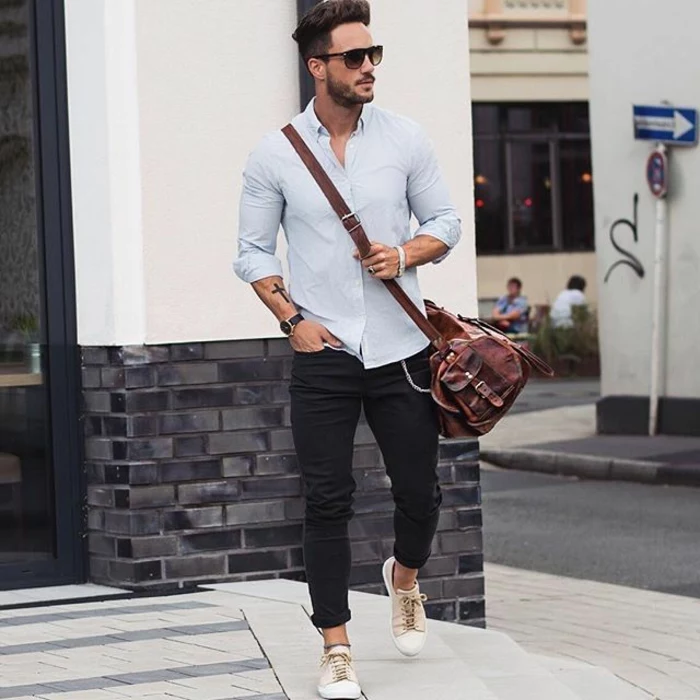
- Find one: Look up local tailors on Yelp or Google Maps and check the reviews. Another pro tip is to ask an employee at a high-quality local menswear store who they recommend.
- Your first visit: Start with something simple, like hemming a pair of pants. This is a low-risk way to test their skills. Heads up: Always bring the shoes you plan to wear with the pants!
- Know the lingo: You can walk in and say, “I’d like these hemmed with a slight break,” and they’ll know exactly what you mean.
- Ask for their opinion: Don’t be afraid to ask, “How do you think this looks?” They’re the experts and can often spot things you wouldn’t.
By the way, tailoring is surprisingly affordable. Expect to pay around $15-$25 to get a pair of trousers hemmed, or maybe $30-$50 to have the waist of a blazer taken in for a sleeker fit. It’s the best money you will ever spend on your clothes, period.
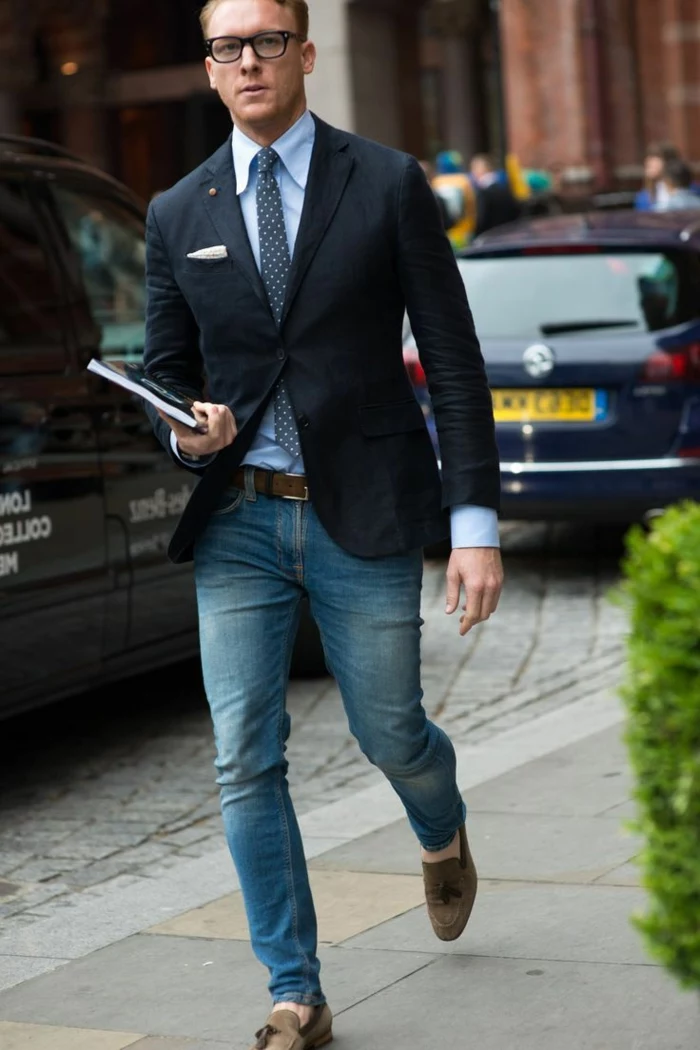
Context Is King: Where You Live and Work Matters
What flies in a creative agency in Los Angeles would probably look odd in a finance office in New York. The principles of good fit and quality fabric are universal, but the actual clothes you wear will change. It’s all about reading the room.
Dressing for the Weather
In hot and humid places, the goal is staying cool without looking like a mess. Lightweight fabrics are your best friend. Think unlined blazers in linen blends or hopsack (a basketweave wool that’s incredibly breathable). For colder climates, layering is a skill. A merino wool v-neck under a sport coat adds warmth without the bulk. Heavier trousers in flannel or corduroy are both practical and stylish.
Dressing for Your Industry
Conservative Fields (Finance, Law): Business casual here is definitely more “business” than “casual.” A blazer is pretty much standard. Stick to wool trousers or high-quality chinos and classic leather dress shoes.
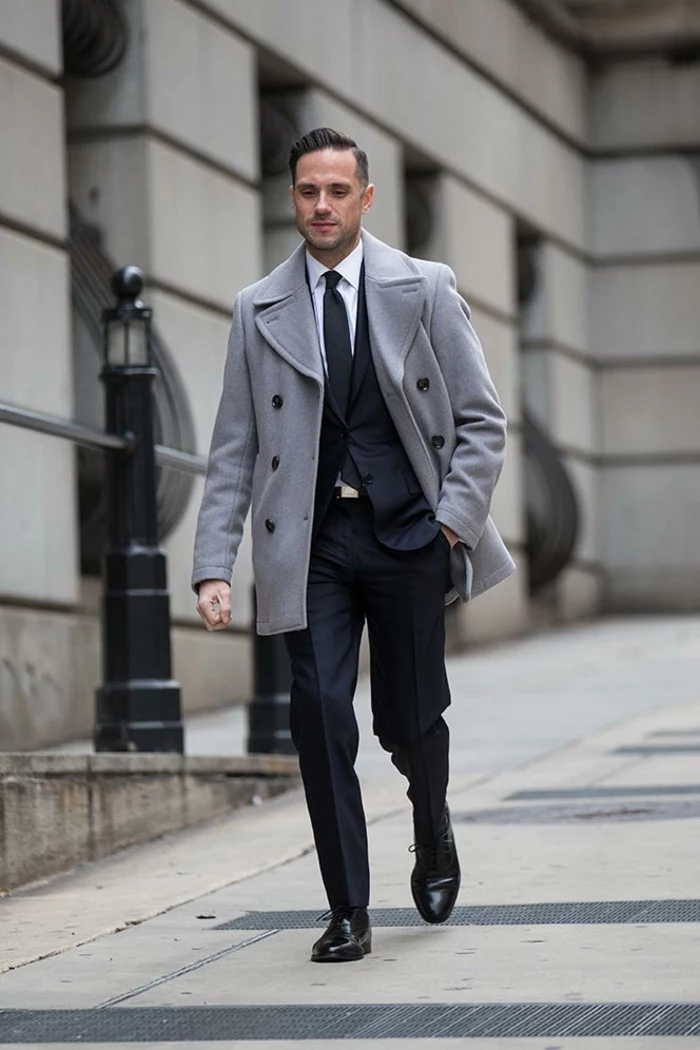
Creative and Tech Fields (Marketing, Software): The vibe is more relaxed, but that doesn’t mean sloppy. The focus shifts to quality and fit. A pair of dark, well-fitting jeans (no rips or crazy fading) can often stand in for chinos. You might wear a nice knit sweater or even a quality plain t-shirt under a casual jacket. And instead of dress shoes, you can go for clean, minimalist leather sneakers. (Think brands like Greats or Common Projects, not your gym shoes.)
A word of caution: when in doubt, it’s always better to be a little overdressed than underdressed. See what the senior people at your company wear—they set the standard.
Your Game Plan: Building a Core Wardrobe
Starting from zero can feel like a huge task. The secret is to build a versatile foundation first. With just these five items, you can create a surprising number of sharp outfits.
The Foundational Five
- A Navy Wool Blazer: A single-breasted, two-button style is the most versatile. You can find a solid starter piece for $150-$250, or invest in a long-term keeper for $400+.
- Two Pairs of Quality Trousers: Get one pair of mid-grey wool trousers and one pair of tan or stone-colored chinos. This duo covers almost every situation.
- Three Core Shirts: One crisp white, one light blue, and one with a subtle pattern like a fine check. Good quality cotton is a must.
- One Pair of Versatile Leather Shoes: Dark brown is more flexible than black for business casual. A simple derby or a classic loafer is a perfect first choice.
- A Matching Leather Belt: An easy rule that always works: your belt should closely match the color and finish of your shoes.
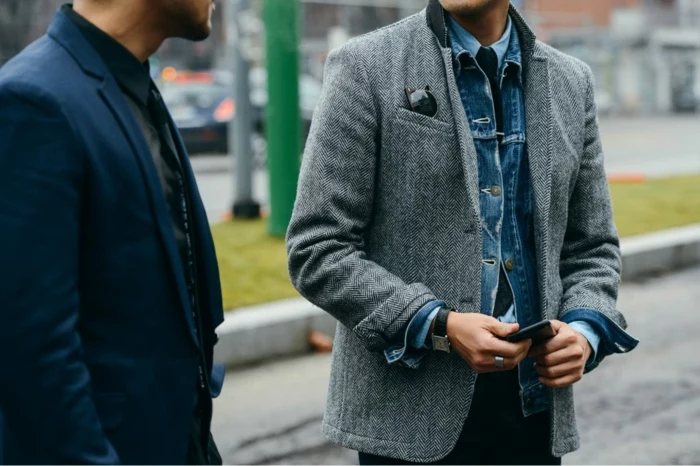
Where to Invest Your Money (and Where to Save)
Be strategic with your budget. A common mistake is blowing a lot of money on trendy shirts you’ll be tired of in a year.
Invest Here:
- Shoes: A well-made pair of Goodyear-welted shoes can be resoled for years of wear. Look at brands like Allen Edmonds or Meermin for great entry points into quality footwear. A good pair might cost $250-$400, but they’ll outlast five pairs of cheap shoes.
- Blazers and Coats: The structure and fabric of a jacket are obvious. A good one is a long-term investment in how you’re perceived.
- Tailoring: As I said before, that $20-$50 you spend on alterations will give you the best return on investment in your entire wardrobe.
Save Here:
- Shirts: You want 100% cotton, but you don’t need luxury brands. There are fantastic online shirtmakers like Charles Tyrwhitt or Spier & Mackay that offer amazing value.
- Chinos: There are plenty of great options for cotton chinos that don’t cost a fortune. Just focus on getting a good fit and a substantial fabric weight.
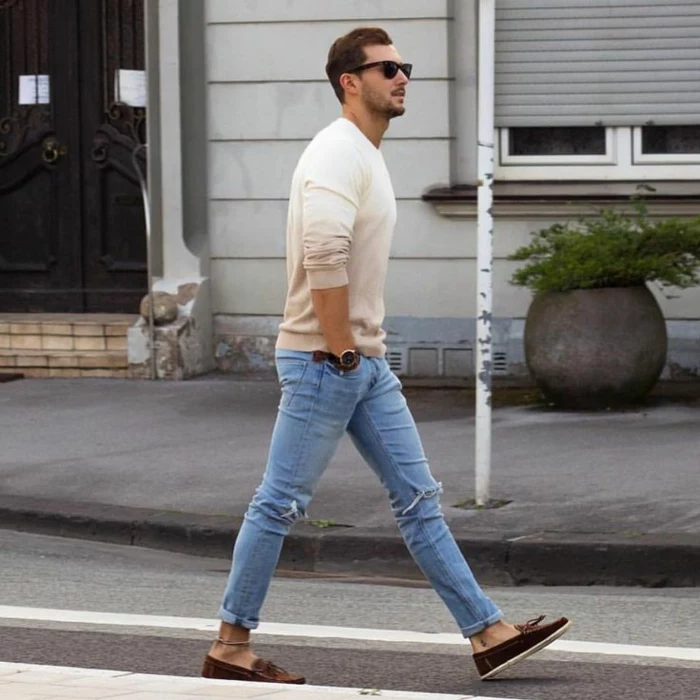
The Next Level: Details That Make a Difference
Once your foundation is set, you can start playing with the finer points of style to show some personality. A quick warning: these take a bit more practice to get right.
Mixing Patterns with Confidence
A lot of guys are scared of mixing patterns, so they just don’t. The trick is to vary the scale. If your shirt has a small, tight check pattern, you can pair it with a tie that has big, bold stripes. If the patterns are too similar in size, they’ll clash and look messy. When you’re just starting, stick to two patterns max (like a patterned shirt and a solid jacket).
The Power of Texture
One of the most sophisticated ways to create a great outfit is to mix up your textures. An outfit can be visually interesting without any loud colors or patterns. Imagine a slightly rough tweed sport coat paired with a soft cashmere sweater, a crisp Oxford shirt, and smooth flannel pants. Each piece has its own character, which adds a depth that an all-cotton outfit just can’t match.
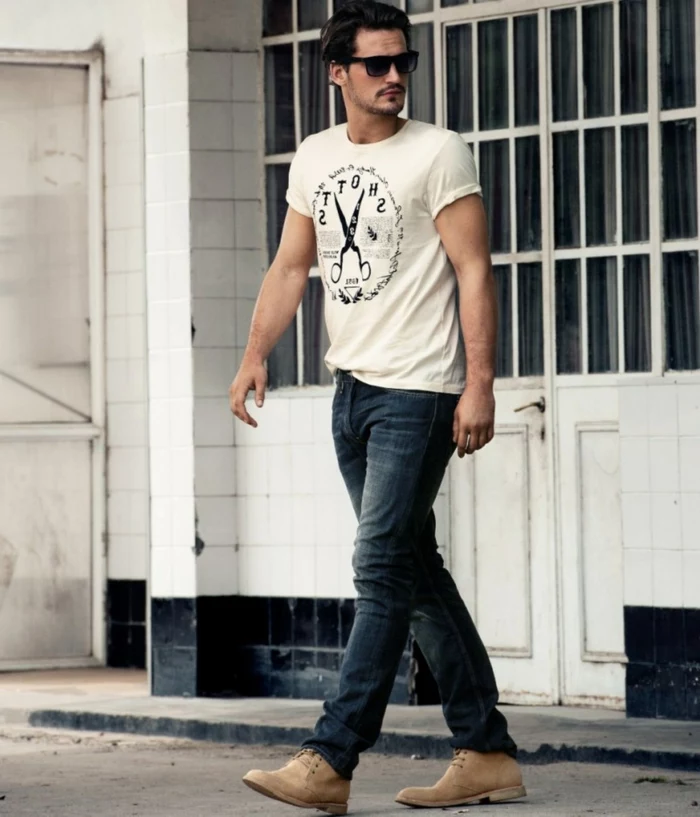
Sport Coat vs. Suit Jacket: Don’t Make This Mistake!
This is a big one. A suit jacket is NOT a blazer. Please, never wear your suit jacket as a separate. A trained eye can spot an “orphaned” suit jacket a mile away. They’re made from smoother, shinier fabric designed to match the pants exactly. They’re also usually more structured. Sport coats are made from more textured fabrics (tweed, hopsack, linen) and have a softer construction and more casual details, like patch pockets. Wearing your suit jacket separately will cause it to wear out and fade differently from the pants, effectively ruining the whole suit.
Taking Care of Your Investment
Buying good clothes is only half the battle. You have to take care of them. A client of mine once brought me a blazer that felt totally dead and flat—turns out he was dry cleaning it every month. Don’t do that!
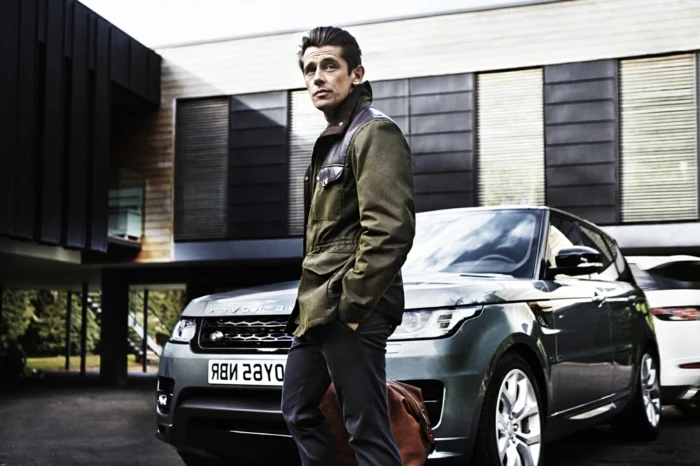
For wool jackets and trousers, you should only dry clean them once or twice a year, at most. The chemicals are harsh and strip the natural oils from the fibers. Instead, brush them with a garment brush after wearing and use a steamer to get out wrinkles. For shoes, use cedar shoe trees the second you take them off. They absorb moisture and help the leather keep its shape. And never wear the same pair two days in a row; they need 24 hours to fully dry out.
And that’s really the core of it. Building a wardrobe is a process, not a one-time event. Start with these foundations, learn what works for you, and build from there. The confidence that comes from knowing you look good is a powerful tool. Use it well.
Inspirational Gallery

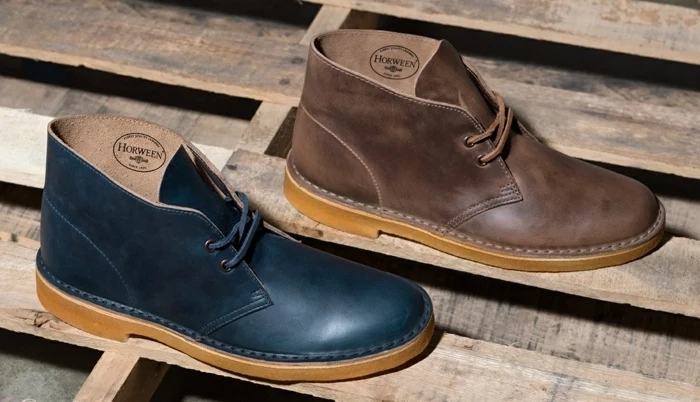
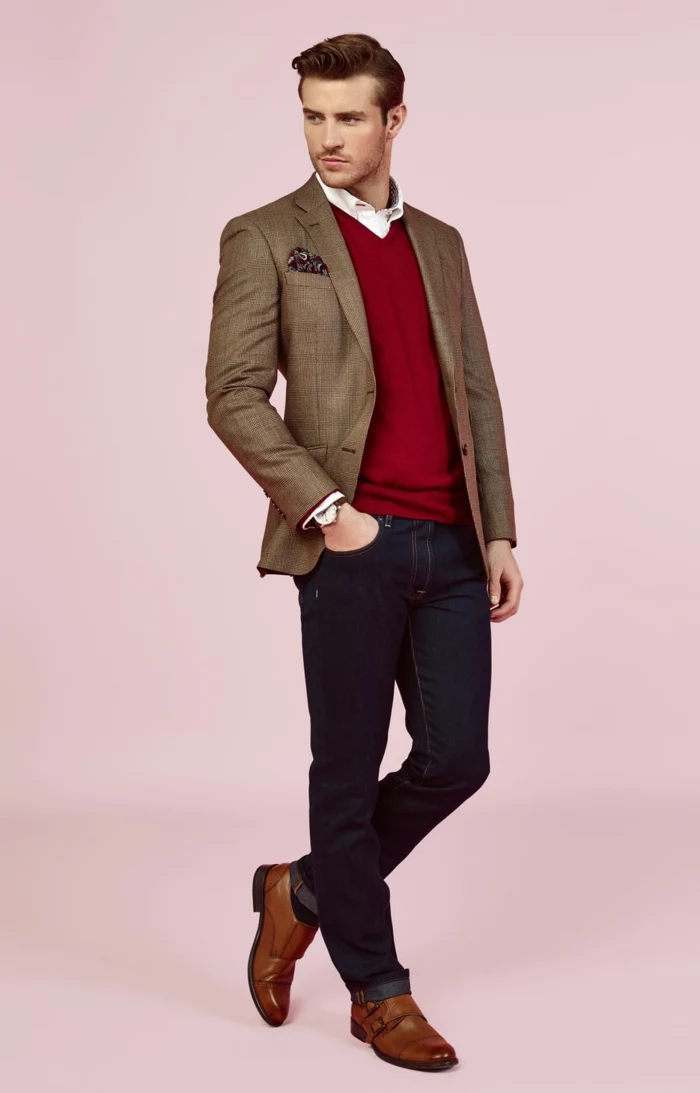
Can you actually wear jeans in a business casual setting?
Absolutely, but the devil is in the details. Opt for a dark wash—indigo or black—with no rips, fading, or distressing. The fit should be slim or straight, never baggy or skinny. Pair them with a structured blazer and leather shoes (like loafers or derby shoes) to elevate the look. Think of them as a substitute for chinos, not your weekend errand jeans. Brands like Levi’s (511 or 502), Mott & Bow, or Bonobos offer excellent options.
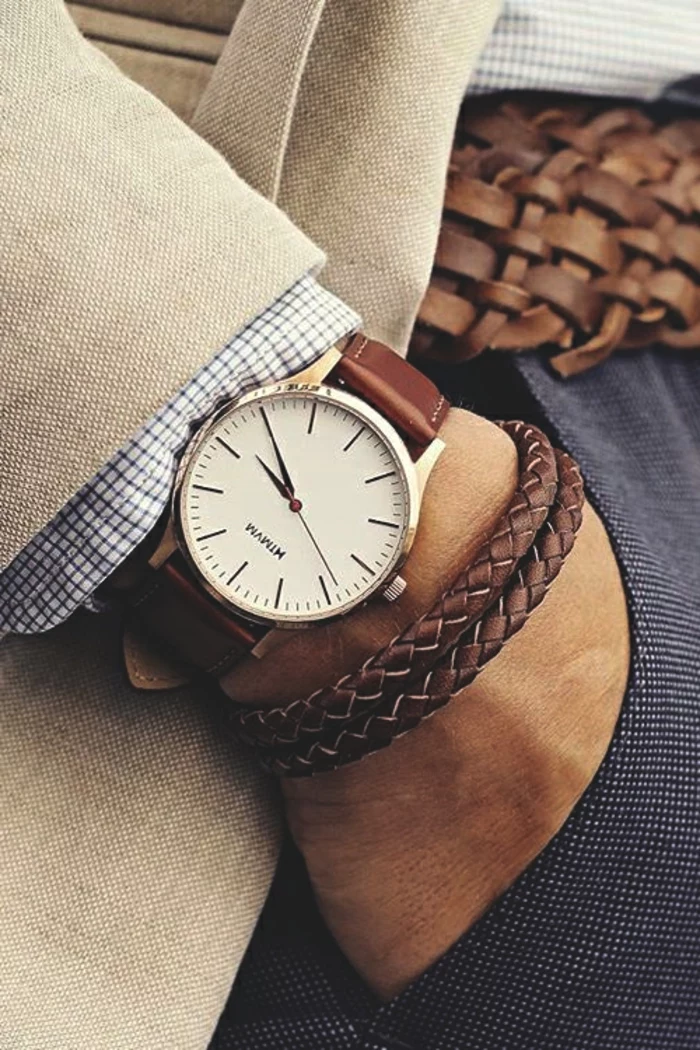
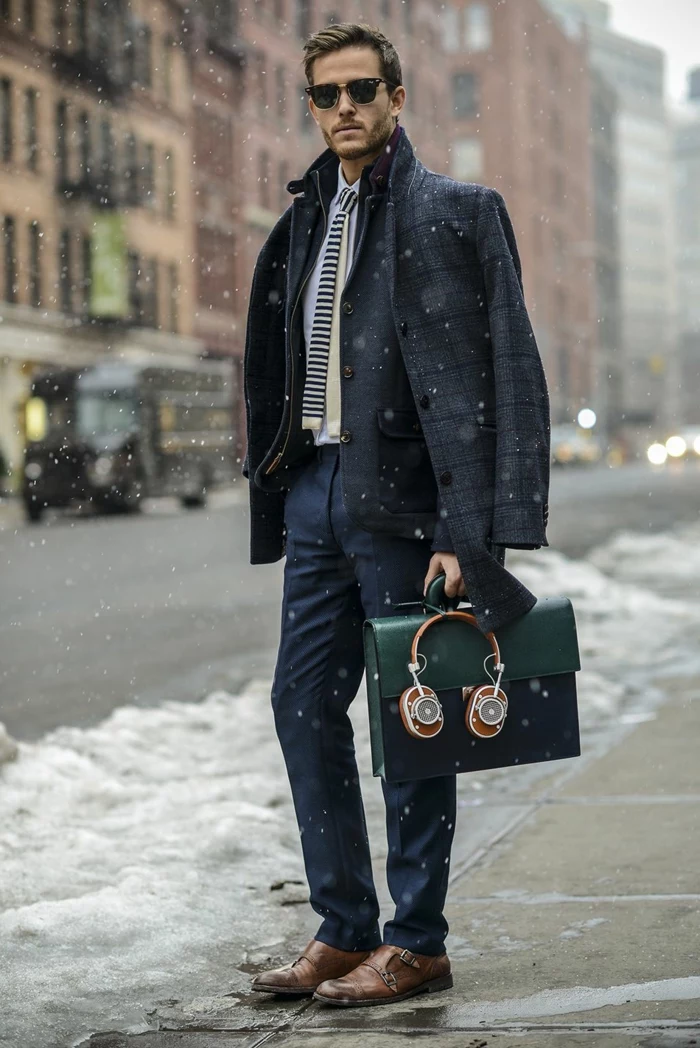
The Sport Coat vs. The Suit Jacket: They are not the same. A suit jacket is made with a matching pair of trousers from the same bolt of fabric. A sport coat or blazer is a standalone piece, often with more texture (like tweed or hopsack), bolder patterns, and less structured shoulders. Never wear your suit jacket as a blazer; it looks orphaned and will wear out unevenly.
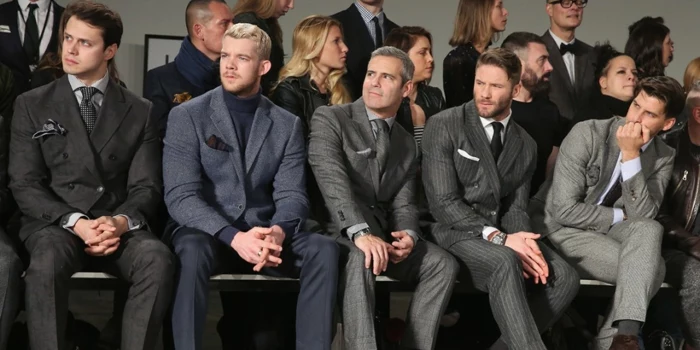
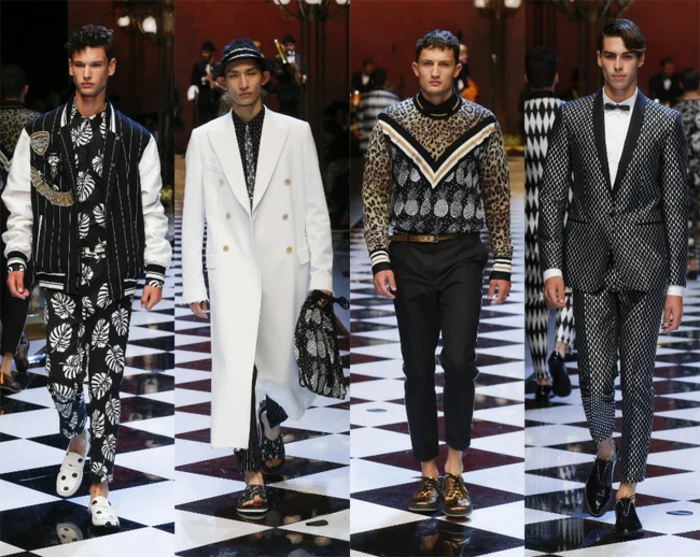
- Adds a third, finishing layer to an outfit.
- Effortlessly bridges the gap between casual and formal.
- Keeps you warm in over-air-conditioned offices.
The secret? The versatile merino wool V-neck sweater. Worn over a collared shirt, it’s a timeless business casual move that always works.
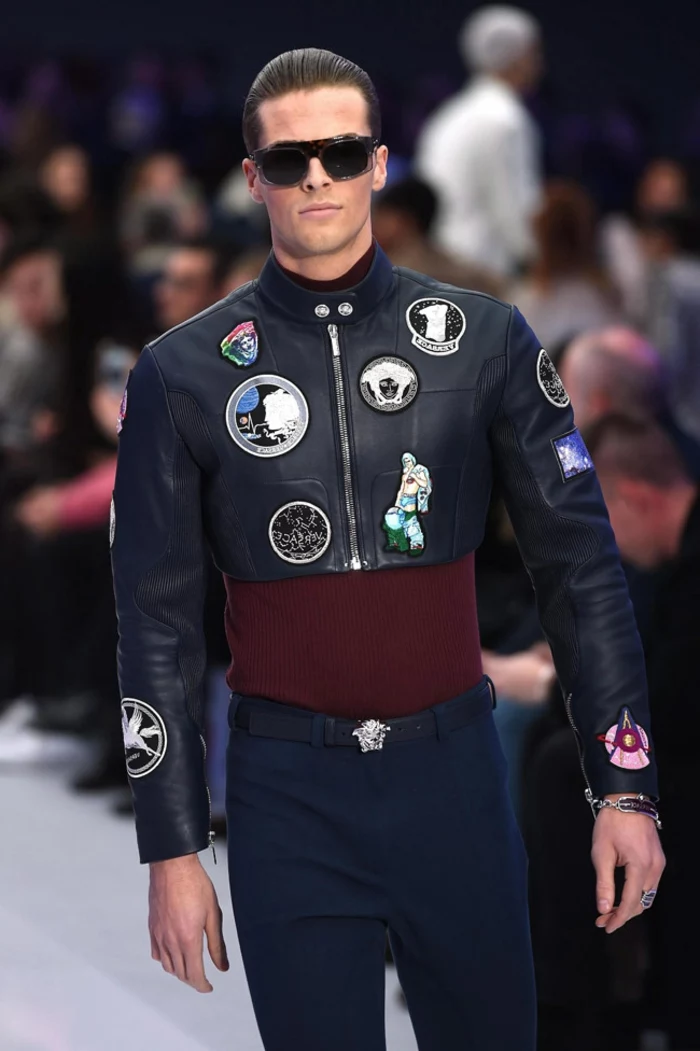
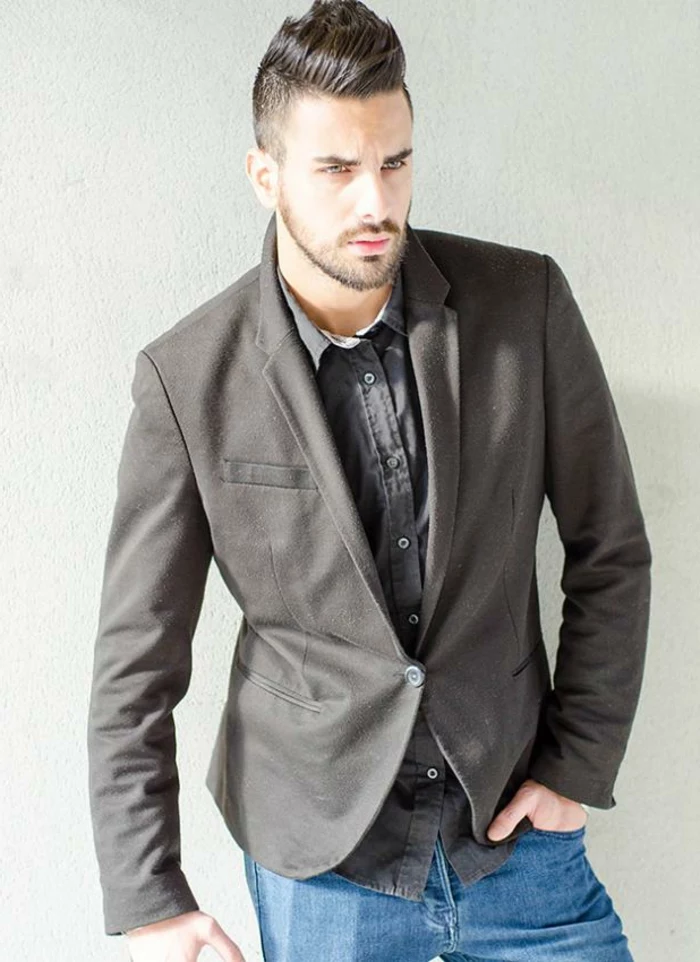
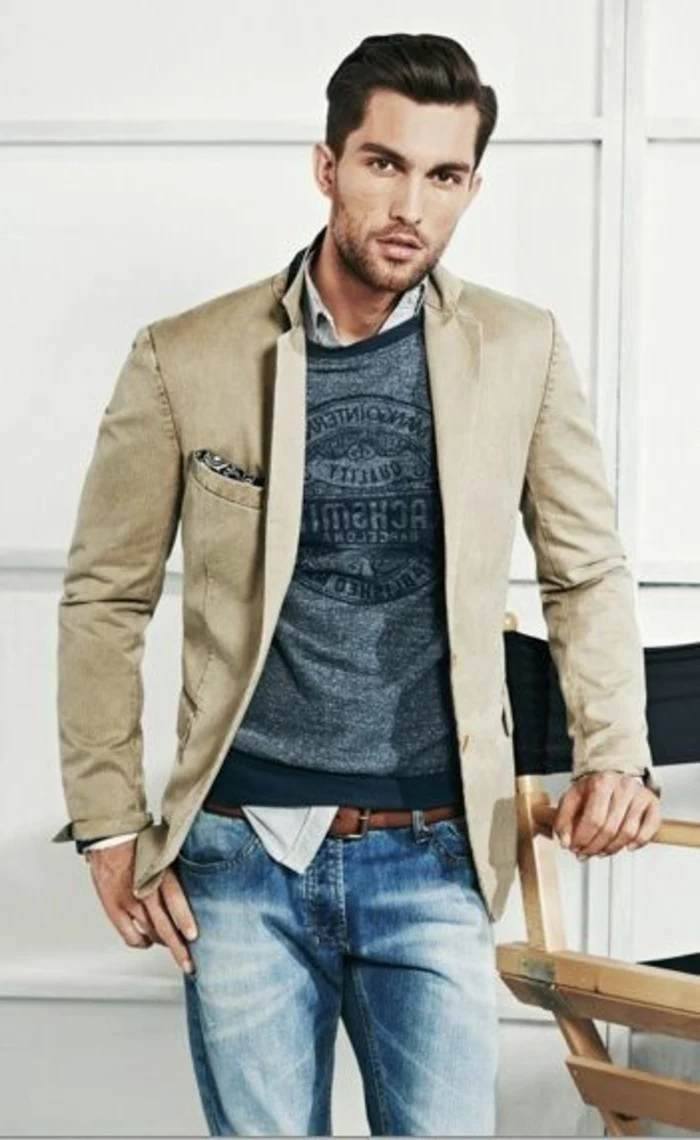
According to a study published in the journal Social Psychological and Personality Science, people who dress up for work report feeling more authoritative, trustworthy, and competent.
This psychological boost, known as
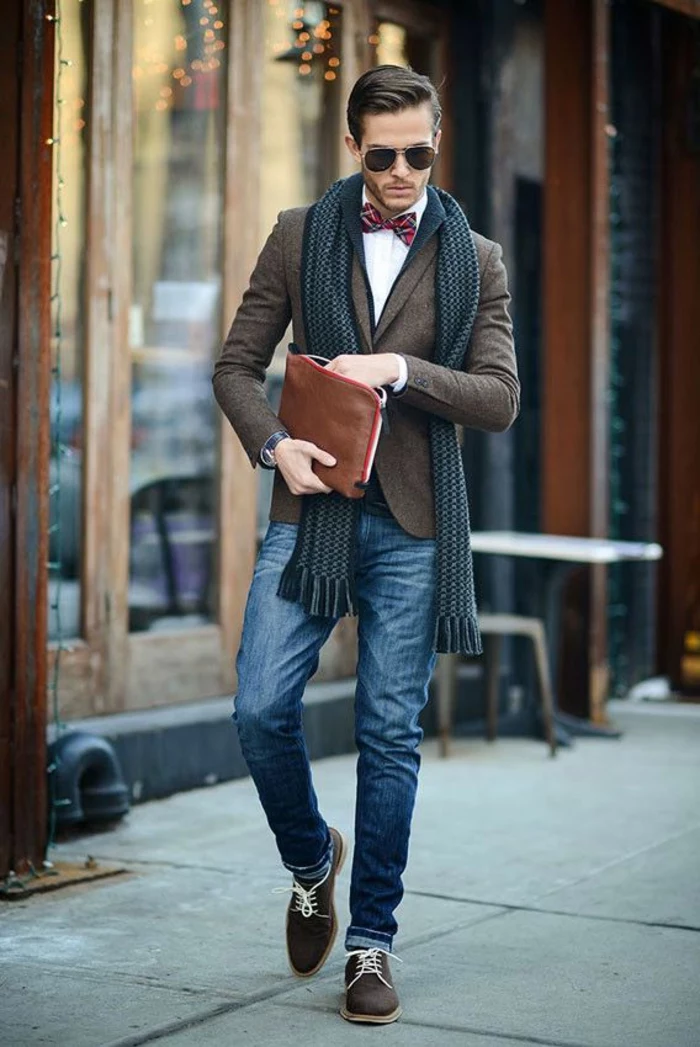
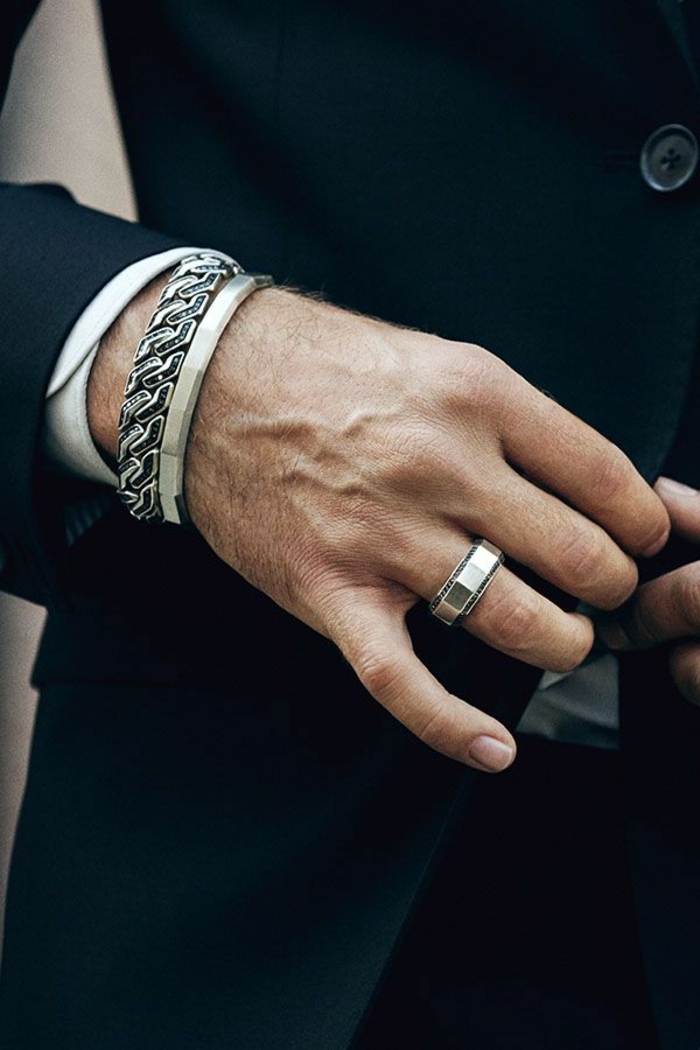
The Shoe Dilemma: Derby vs. Oxford
Derby shoes: Characterized by their open lacing system (the eyelet tabs are stitched on top of the vamp), they are considered slightly less formal and are the perfect, versatile choice for business casual.
Oxford shoes: Featuring a closed lacing system (the vamp is stitched over the quarters), they are more formal and best reserved for suits.
For a go-to business casual shoe, a brown leather derby is almost unbeatable.
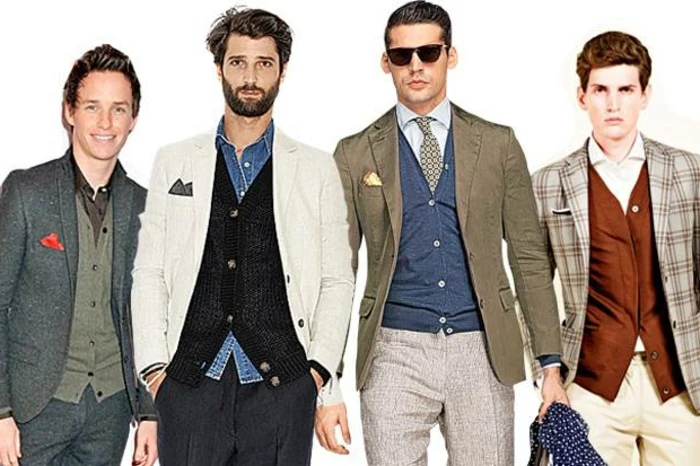
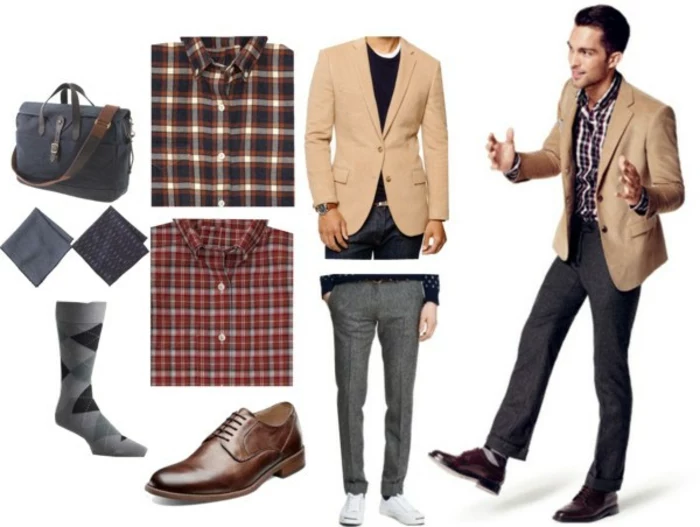
Pay attention to the ‘break’ of your trousers—that’s the small fold of fabric that forms at the bottom of your pants where they meet your shoes. For a modern business casual look, aim for a ‘slight’ or ‘quarter’ break. This means the hem just kisses the top of your shoe, creating a clean, sharp line. Avoid the ‘puddling’ of excess fabric, which looks sloppy.
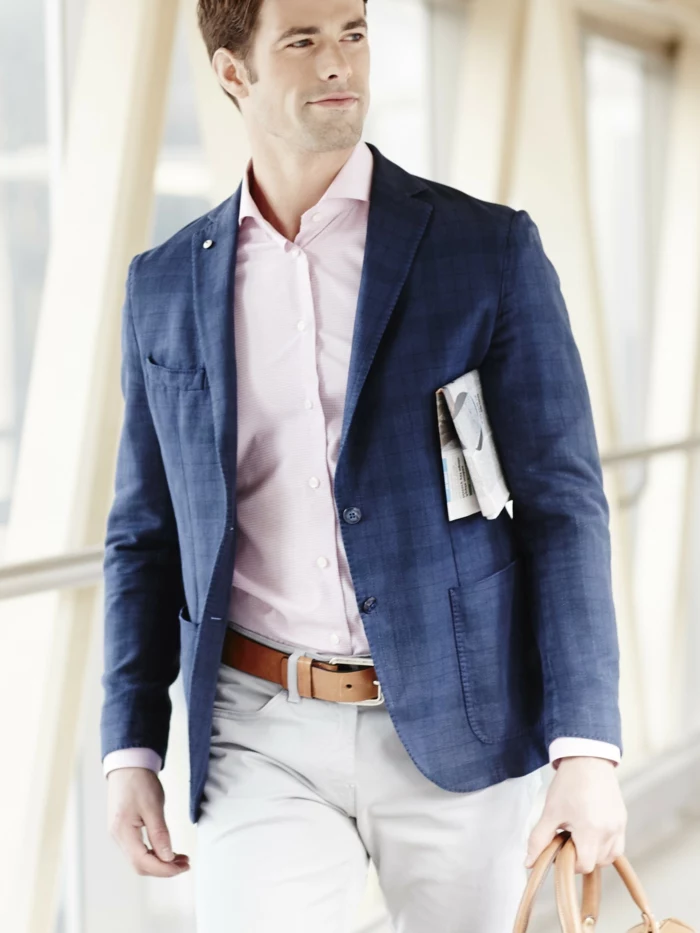
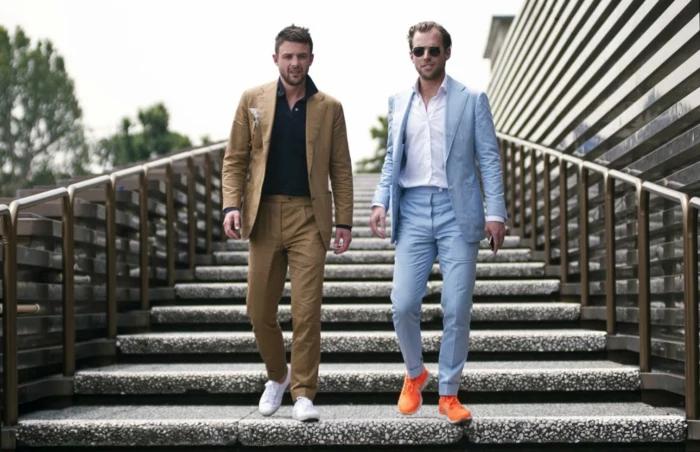
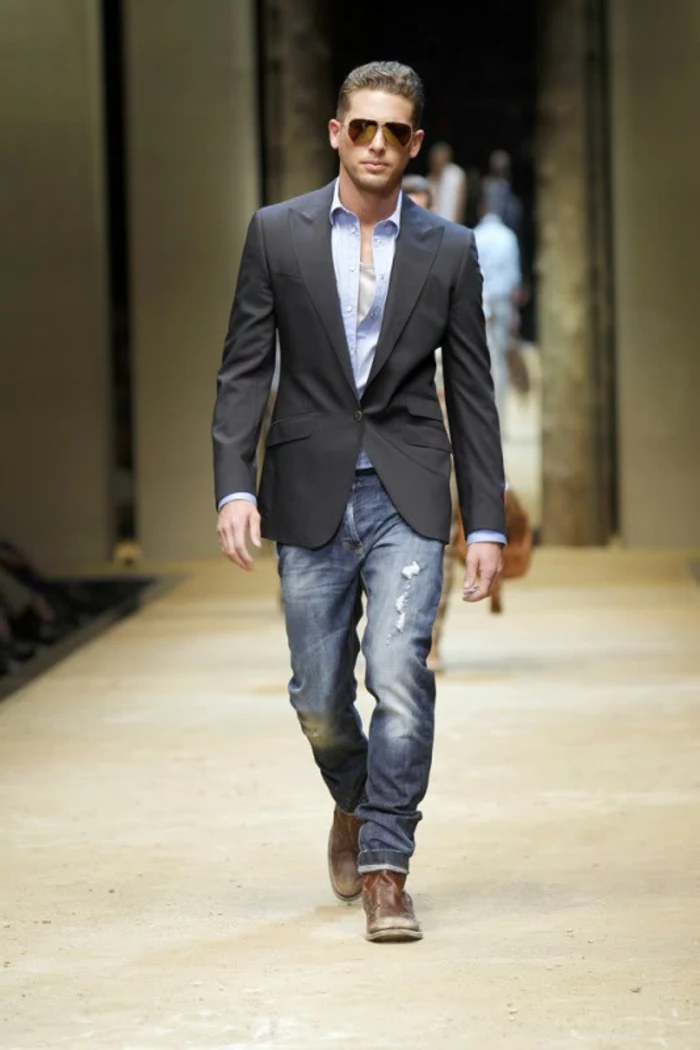
Get familiar with the art of the Italian ‘sprezzatura.’ It’s not about being messy, but about cultivating a look of studied nonchalance. Think a watch worn over a shirt cuff, a slightly unbuttoned collar on a dress shirt (sans tie), or a pocket square with a casual puff fold. It’s the small, imperfect touch that makes a sharp outfit feel personal and effortless, not like a uniform.
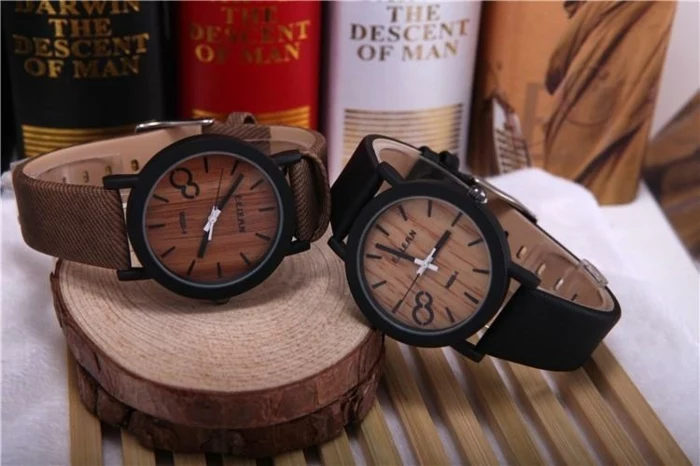
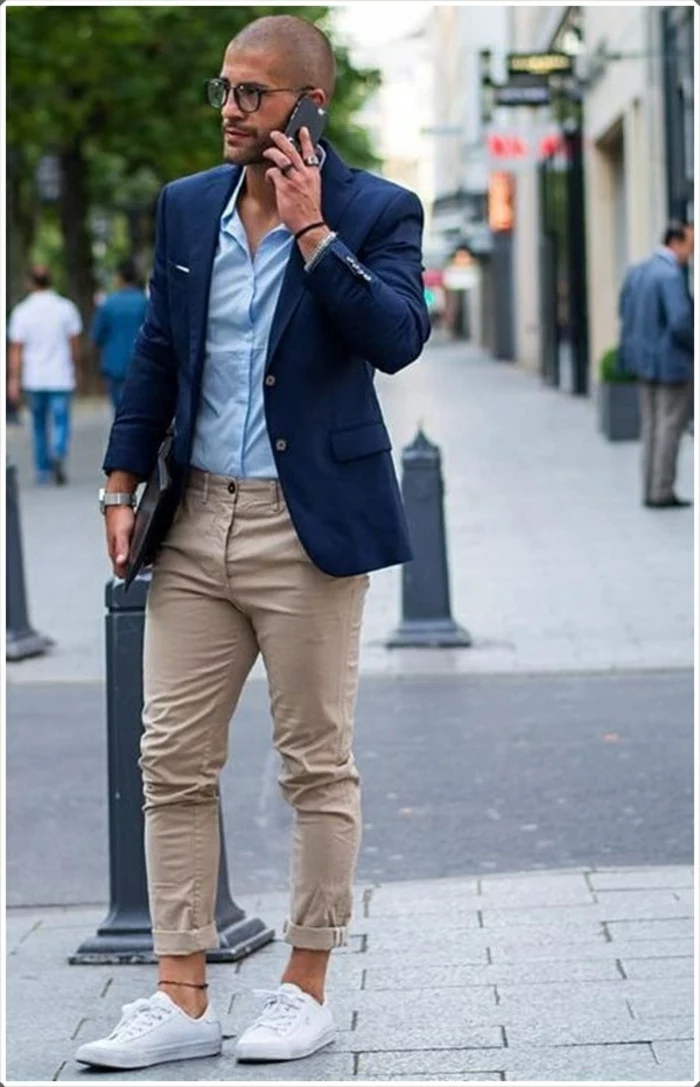
- Don’t match your socks to your shoes; match them to your trousers. This creates a longer, unbroken visual line, making you appear taller.
- If you want to add a pop of color, a patterned sock is a great place to do it, but make sure the colors complement, rather than clash with, the rest of your outfit.
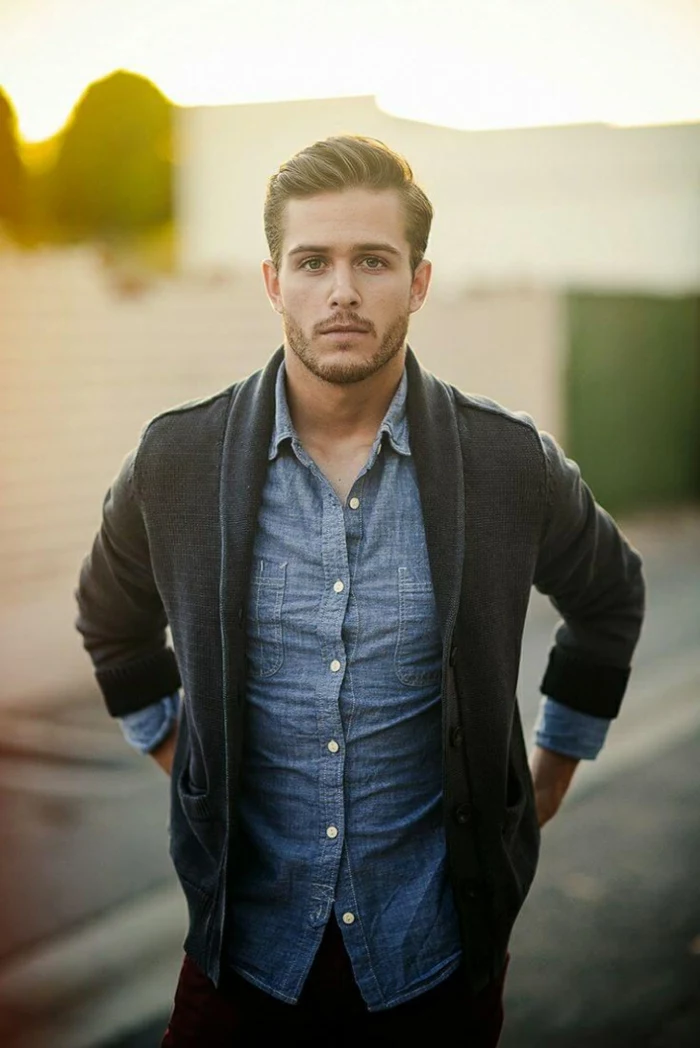
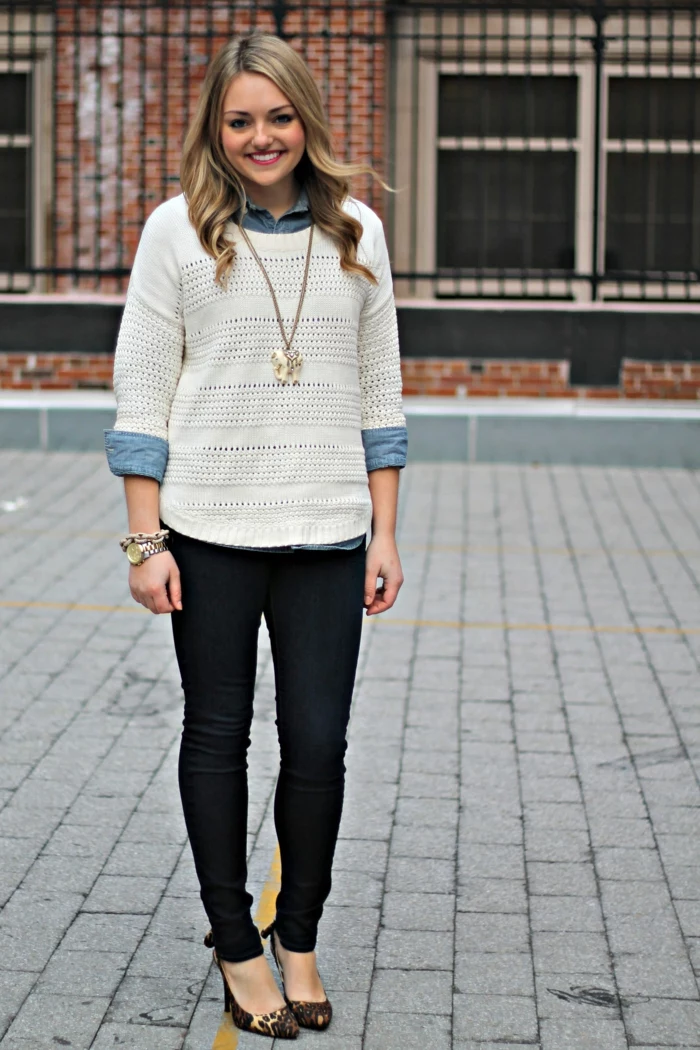
A single pair of cedar shoe trees can extend the life of your leather dress shoes by up to 50%.
Why? Because unvarnished cedar absorbs the moisture and salt from your sweat, which would otherwise warp the leather. They also help the shoe maintain its original shape as it dries, preventing deep creases from setting in. It’s the single best investment you can make after buying a quality pair of shoes from brands like Allen Edmonds or Meermin.
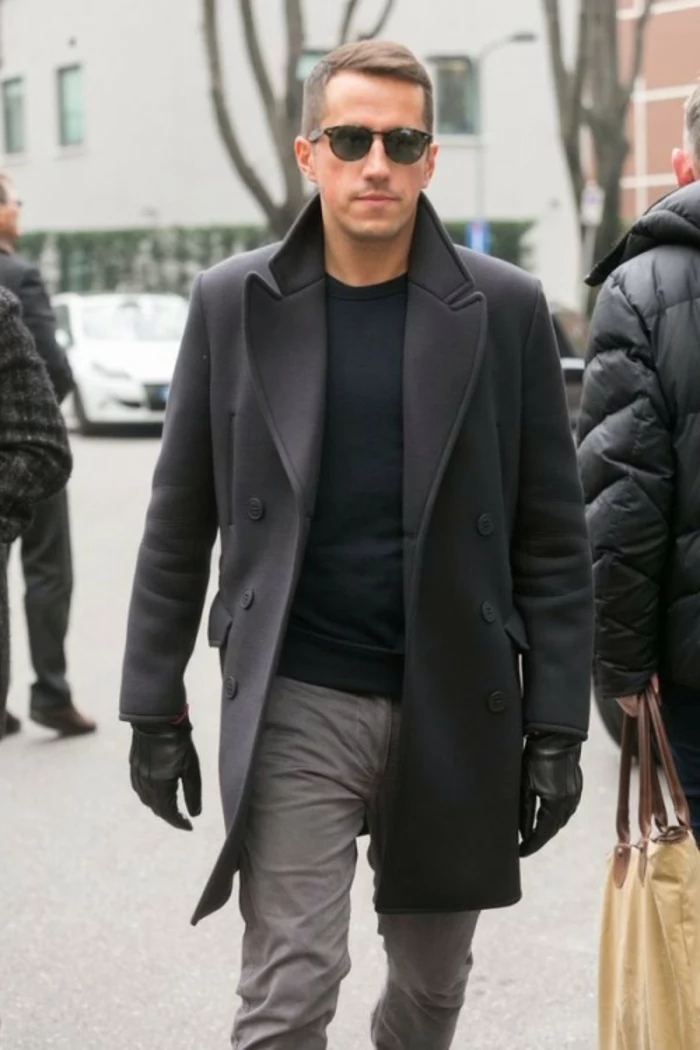
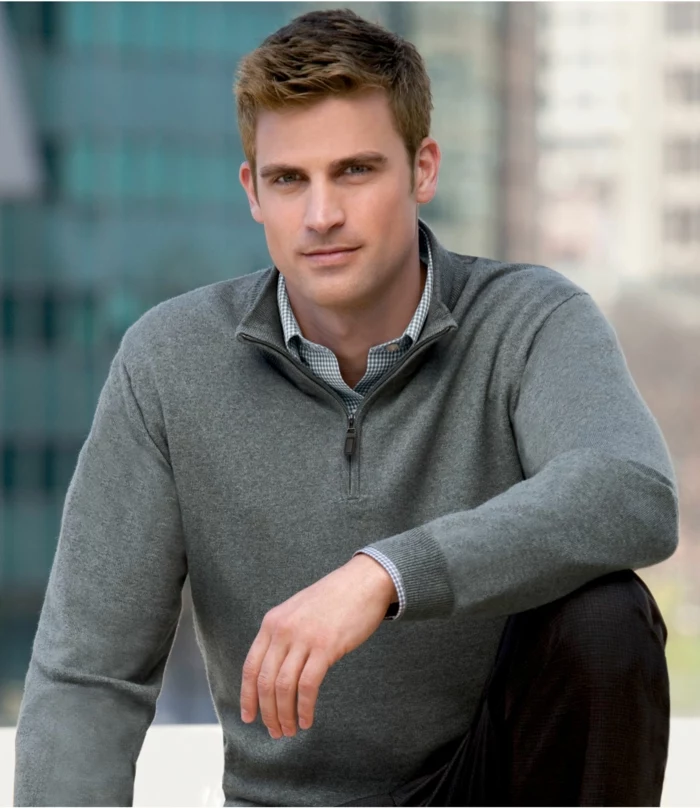
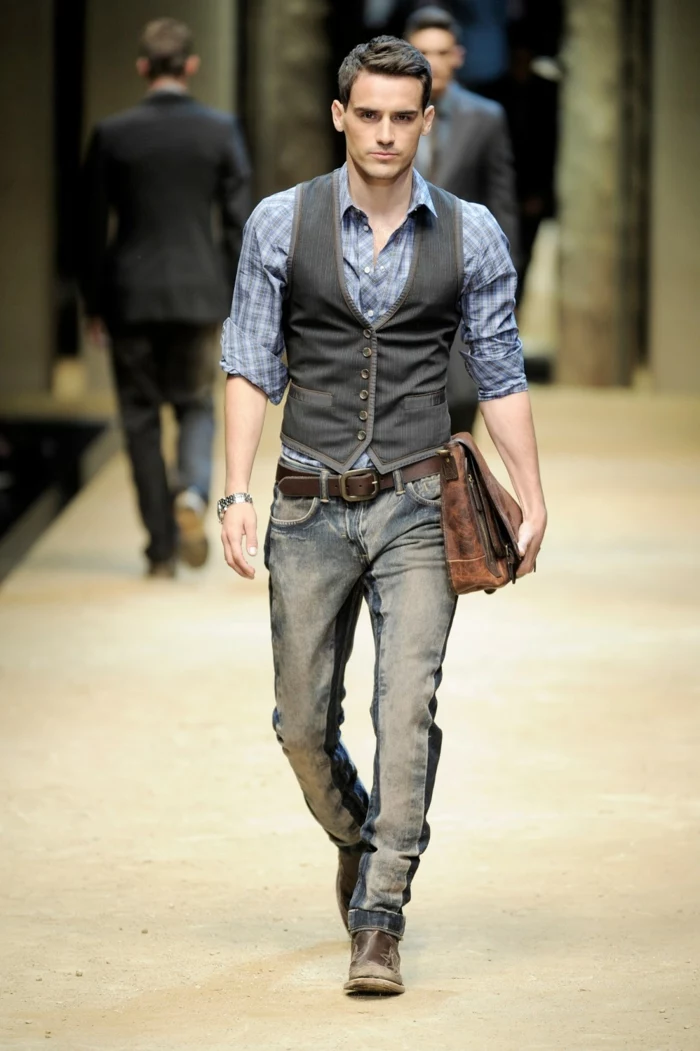
The rise of performance fabrics has been a game-changer for business casual. Brands like Mizzen+Main (for dress shirts) and Lululemon (with their ABC Pant) have integrated stretch, moisture-wicking, and wrinkle-resistant technology into office-appropriate clothing. The result is clothing that looks sharp but feels as comfortable as athletic wear, perfect for a commute or a long day of meetings.
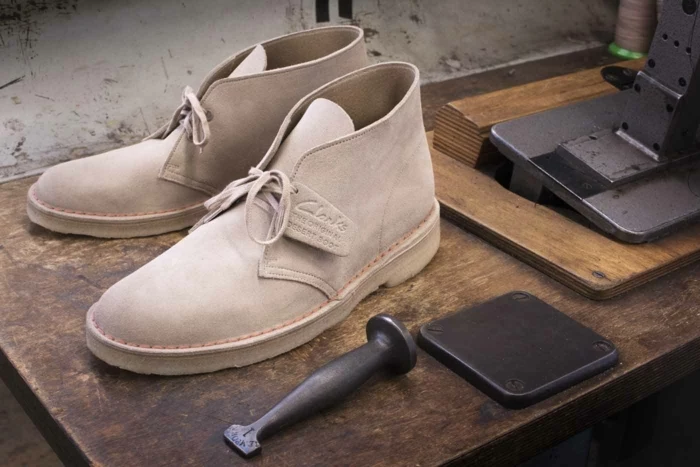
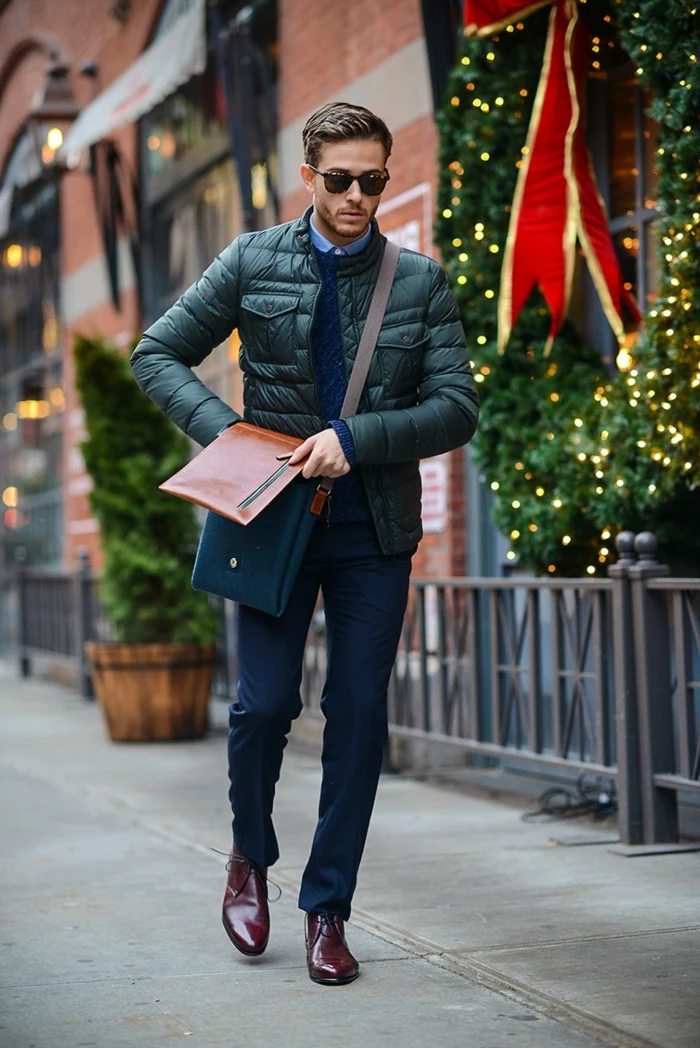
Struggling with color combinations?
Start with a neutral base and build from there. A wardrobe founded on navy, grey, olive, and khaki is incredibly versatile. These colors all work well with each other and provide a perfect canvas for adding a single, more vibrant color—like a burgundy sweater, a forest green tie, or a light blue shirt. This simple formula prevents you from looking like you got dressed in the dark.
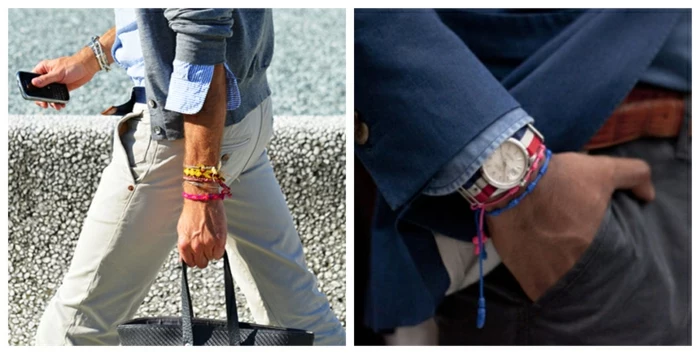
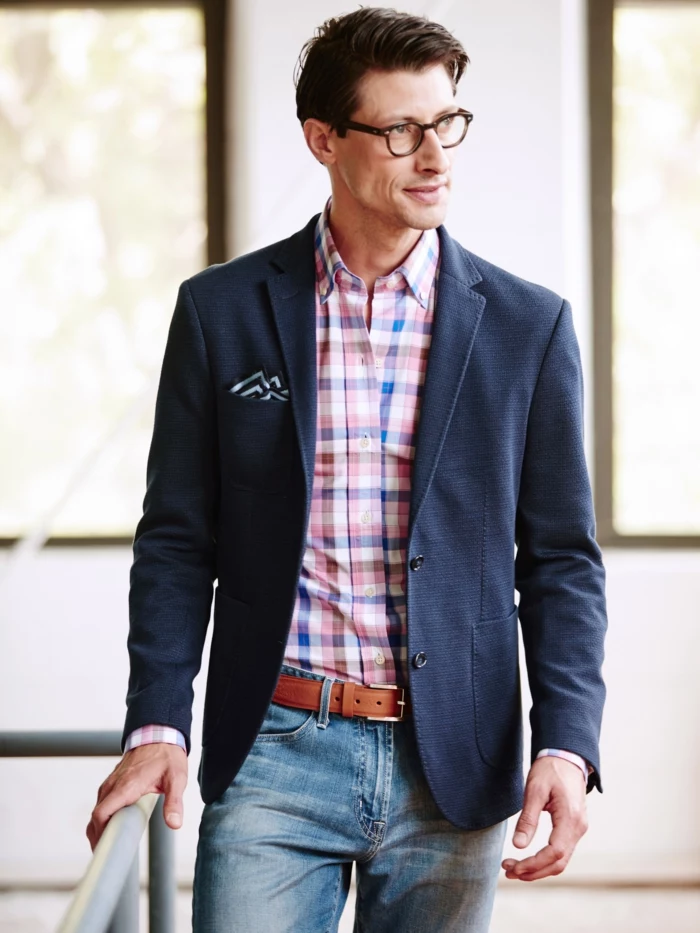
A Crucial Detail: Your belt should be a close match to your shoes in both color and finish. A brown suede belt with brown suede loafers. A black leather belt with black leather derbies. This visual link helps tie the top and bottom halves of your outfit together. And ensure your belt buckle is simple and understated—nothing too large or ornate.
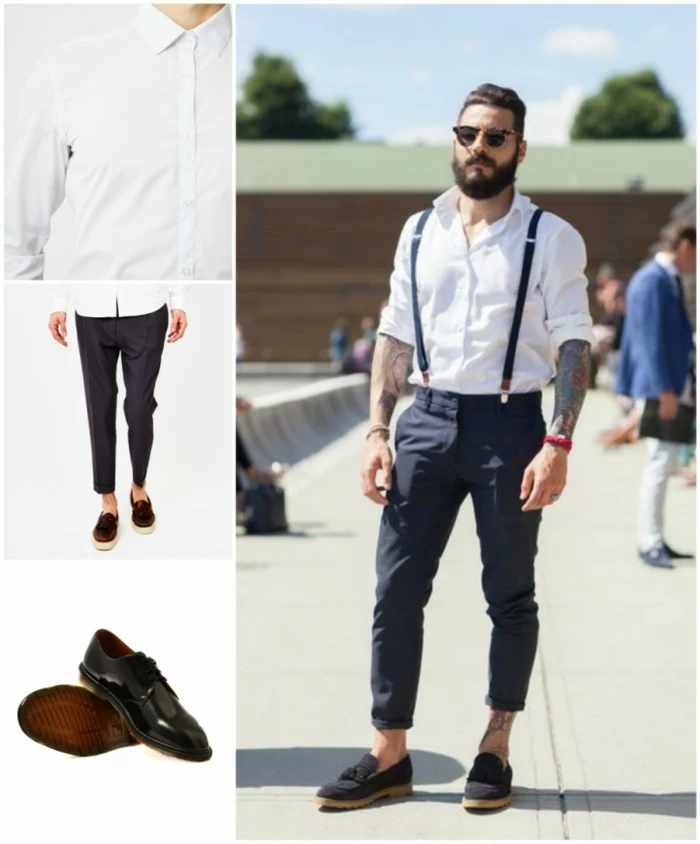
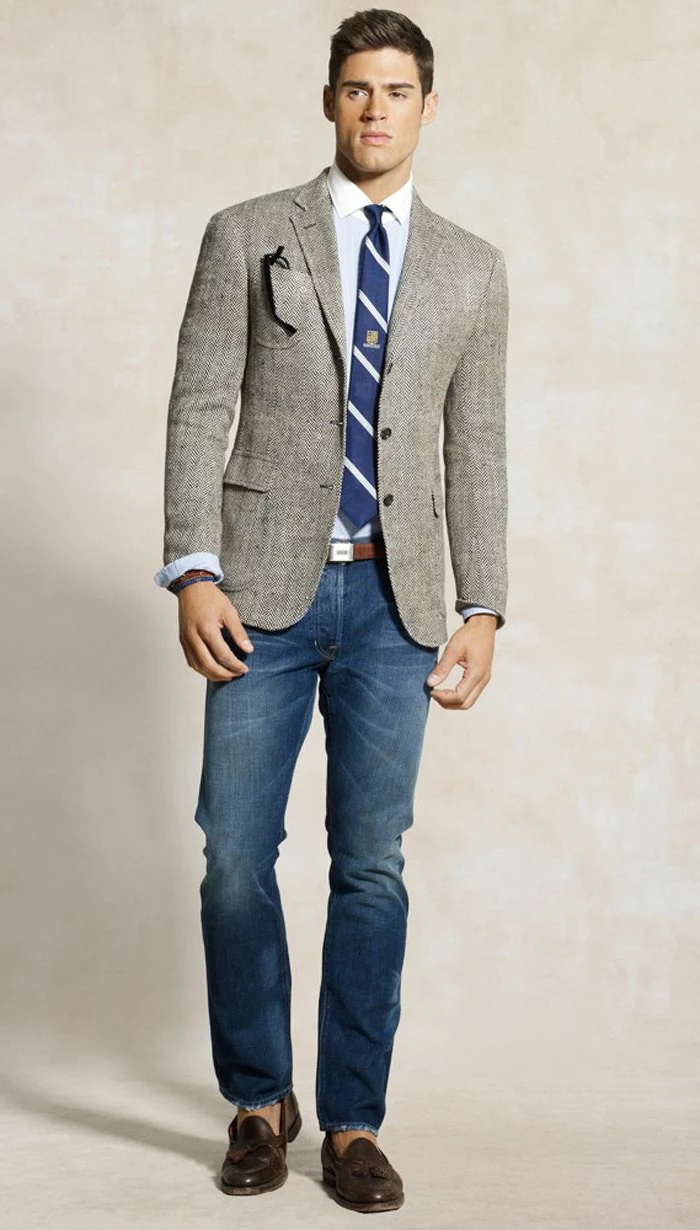
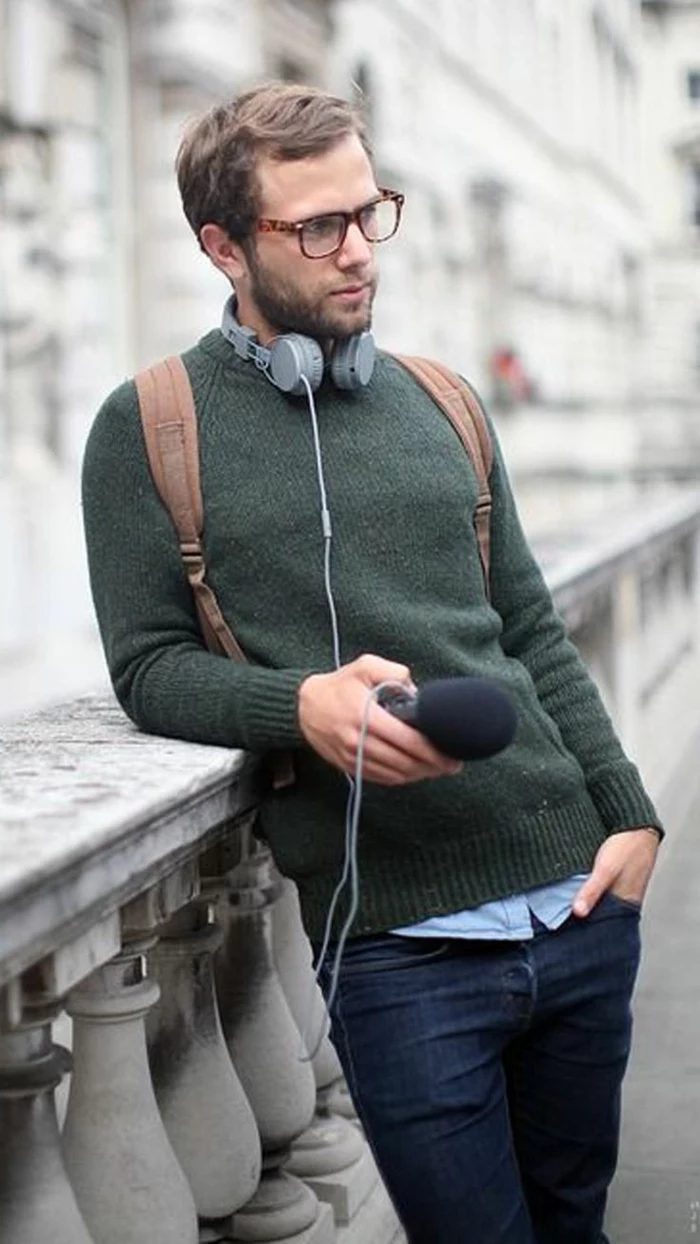
- The TV Fold: A simple, clean rectangle peeking out. Professional and understated.
- The Puff Fold: Just pinch the center and stuff it in. Casual and effortless.
- The Tipped Corner: A triangle of color or pattern. A classic choice.
These are three easy ways to wear a pocket square. The goal isn’t to perfectly match your tie; it’s to complement a color from your shirt or tie in a subtle way.
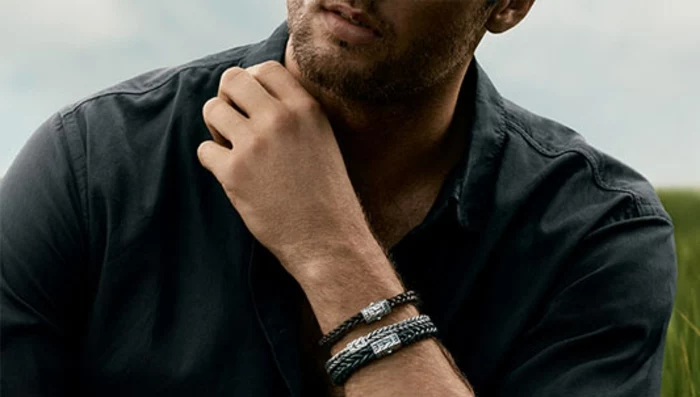
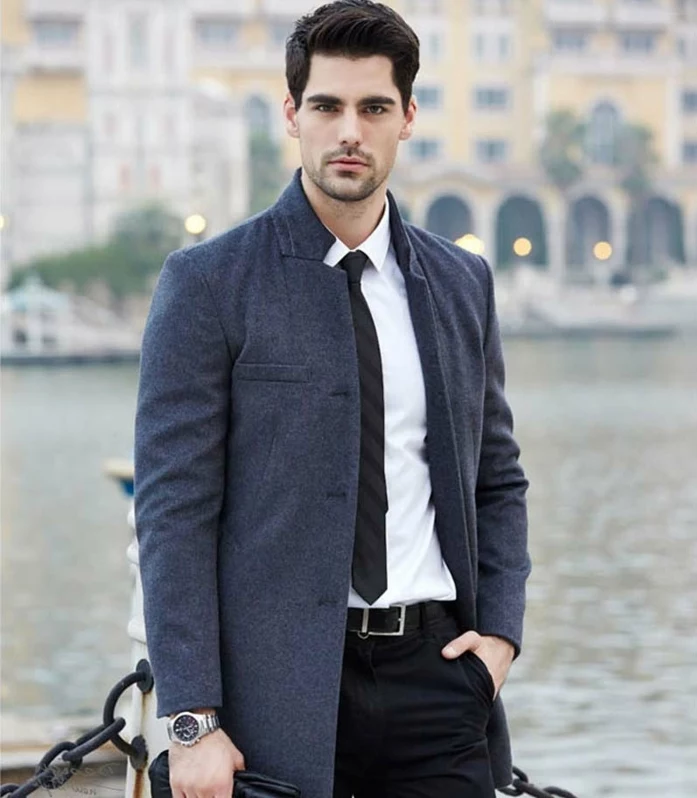
Chinos: Made from lightweight cotton twill, they are the backbone of business casual. Softer and more relaxed than dress trousers.
Dress Trousers (or Slacks): Typically made from wool, flannel, or linen, they have a sharper crease and a more formal drape.
A good rule of thumb: If you’re wearing a blazer, either can work. If you’re just wearing a dress shirt, wool trousers will always look more formal and elevated than chinos.
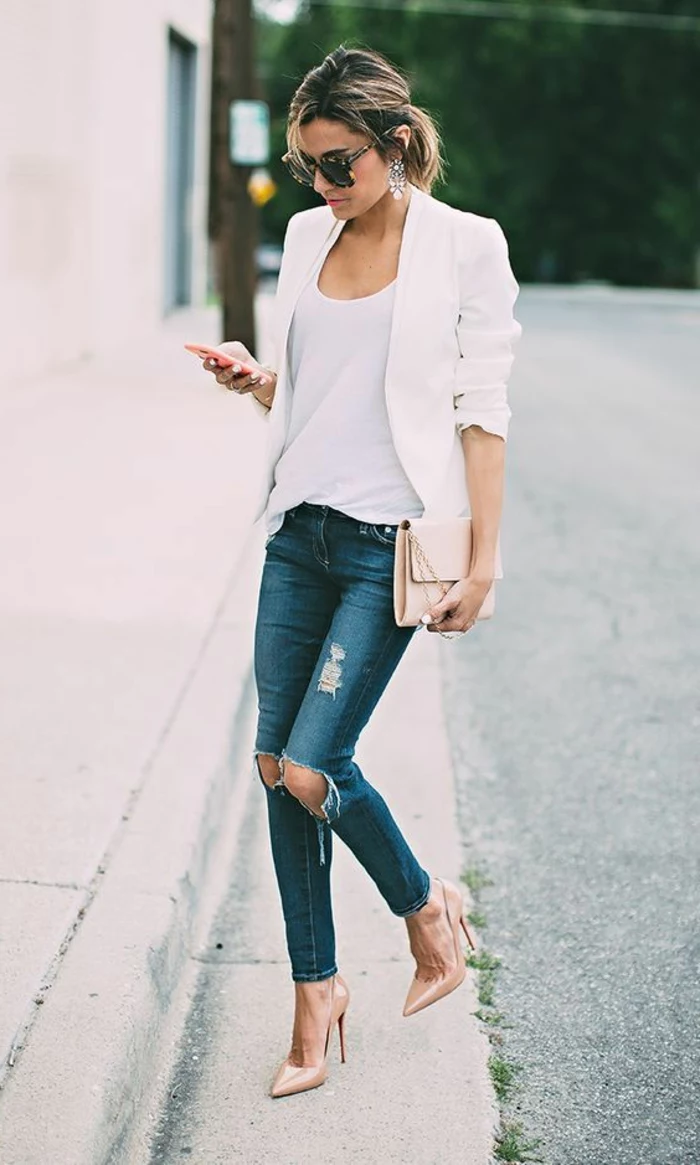
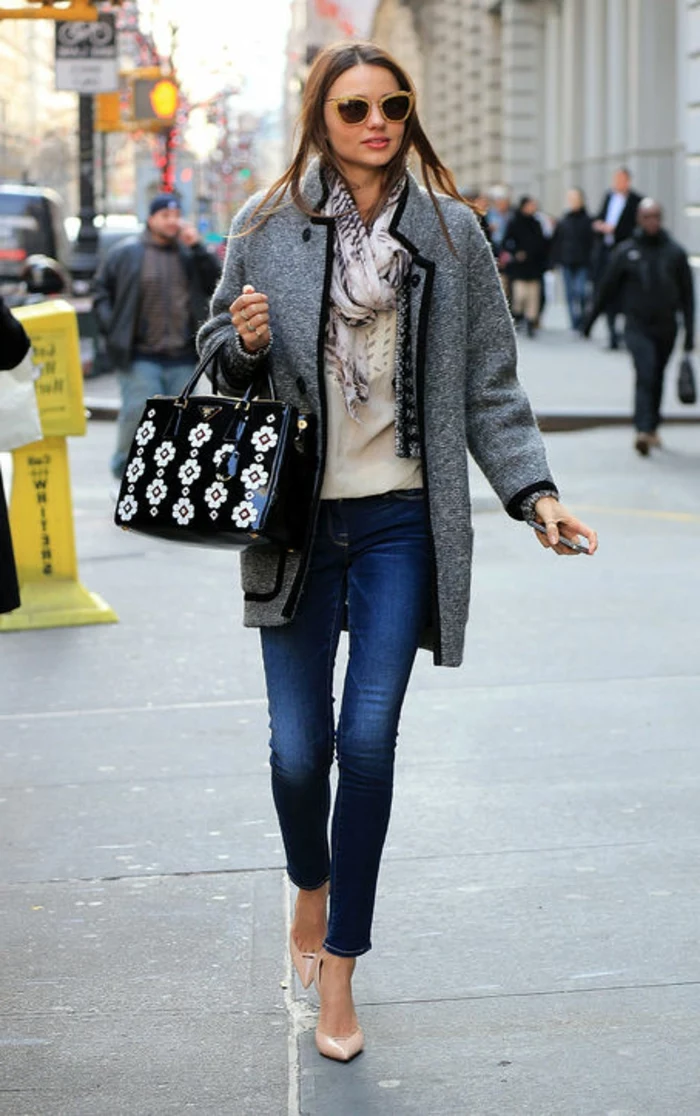
The Tuck Rule is simpler than you think. If the shirt has a long, curved ‘tail,’ it’s designed to be tucked in. If it has a flat, straight hem (like most polos and casual button-downs), it’s designed to be worn untucked. Tucking in a shirt meant to be untucked often looks bulky and awkward around the waist.
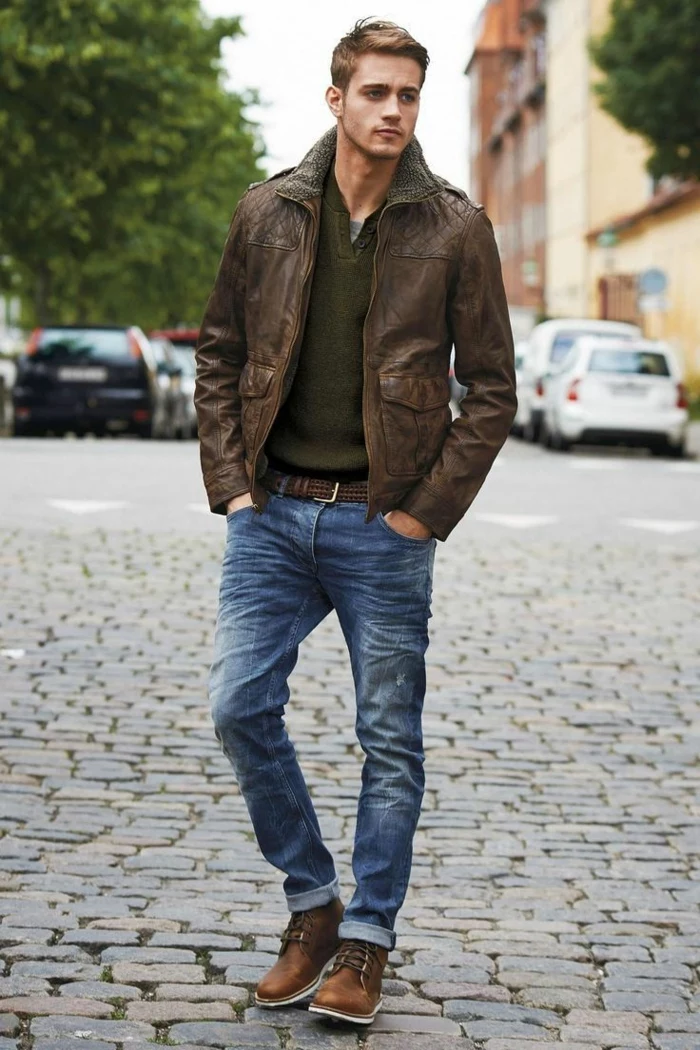

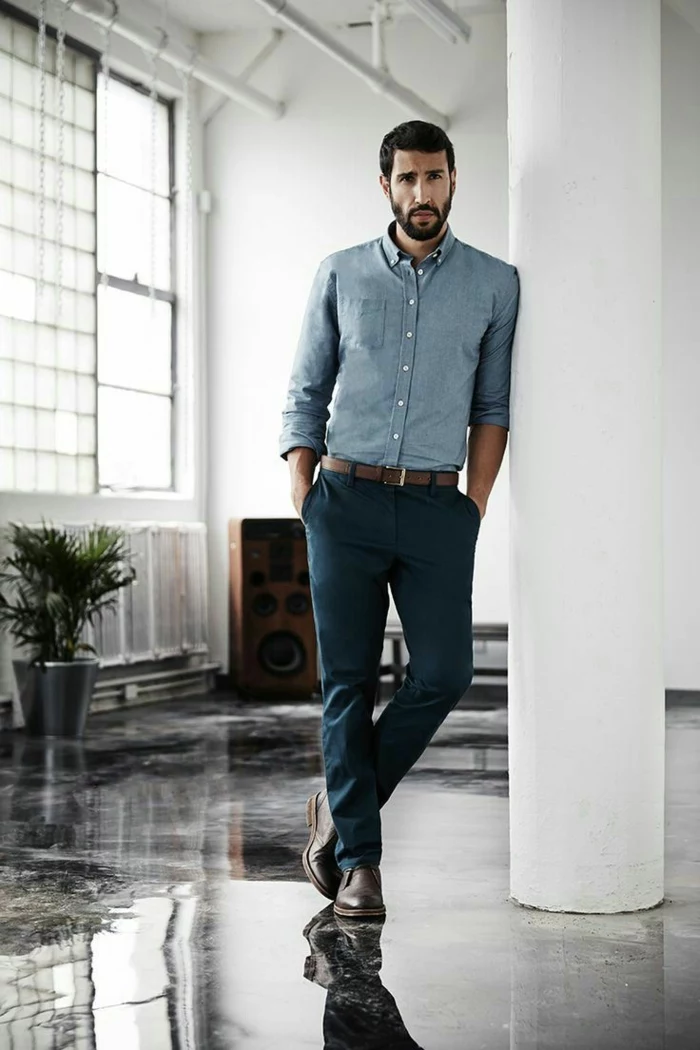
Don’t be afraid to mix patterns, but follow the rule of scale. The key is to ensure the patterns are of different sizes. A shirt with a small, subtle check (like gingham) works beautifully with a tie that has a larger, more widely spaced pattern (like a repp stripe or paisley). Two patterns of the same scale placed next to each other will look busy and jarring.
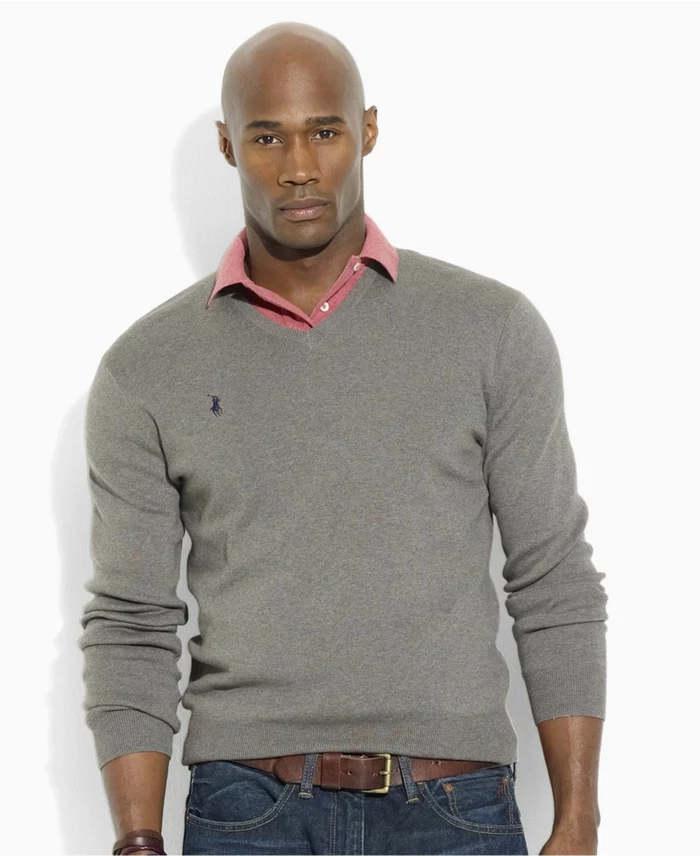
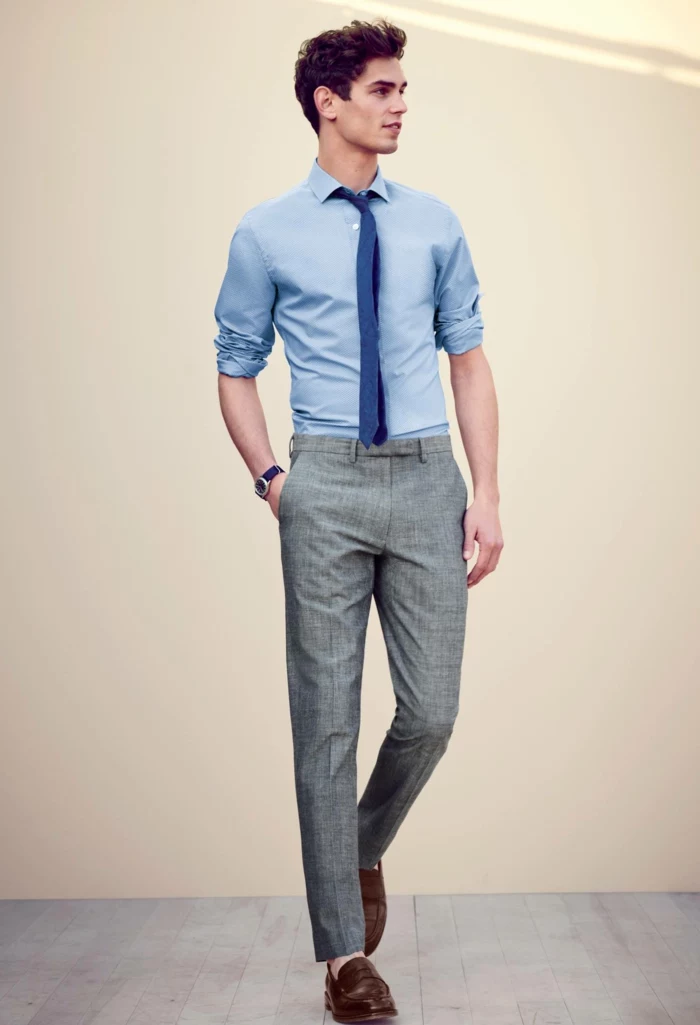
- Comfort that rivals a sneaker.
- A sole flexible enough for a long commute.
- An upper that’s polished enough for the office.
The source? The modern hybrid dress shoe. Brands like Cole Haan (with their ØriginalGrand line) or Wolf & Shepherd have perfected this blend of athletic technology and classic style.
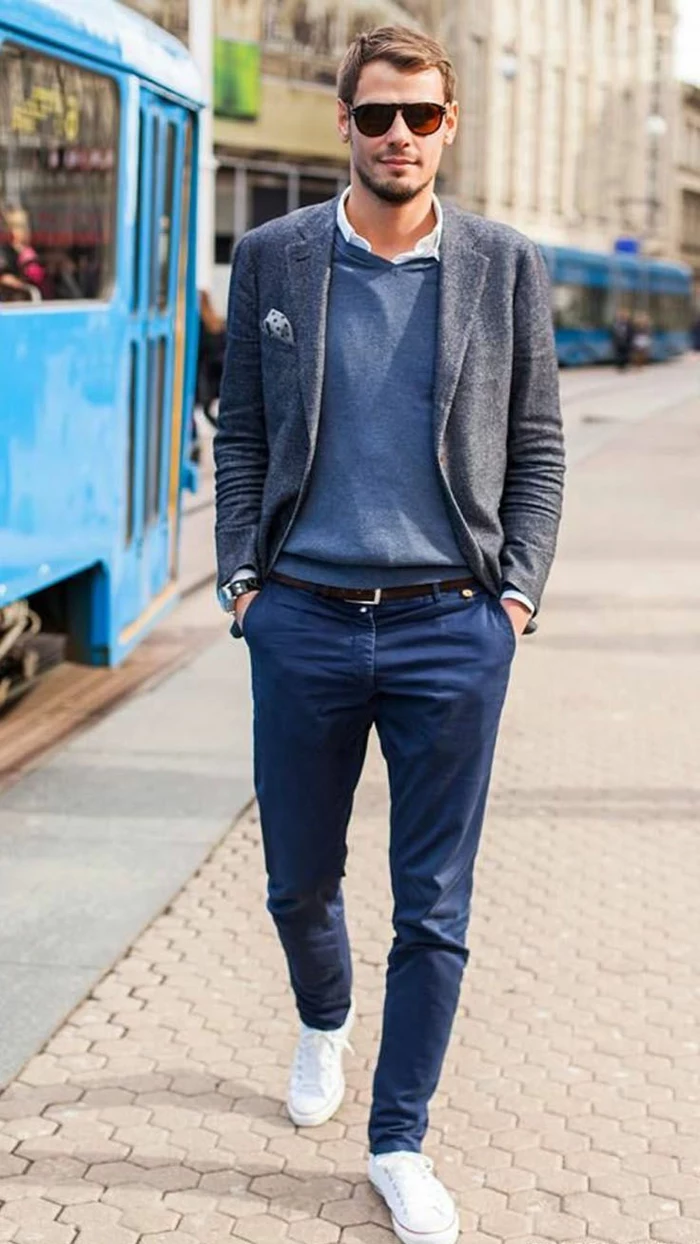
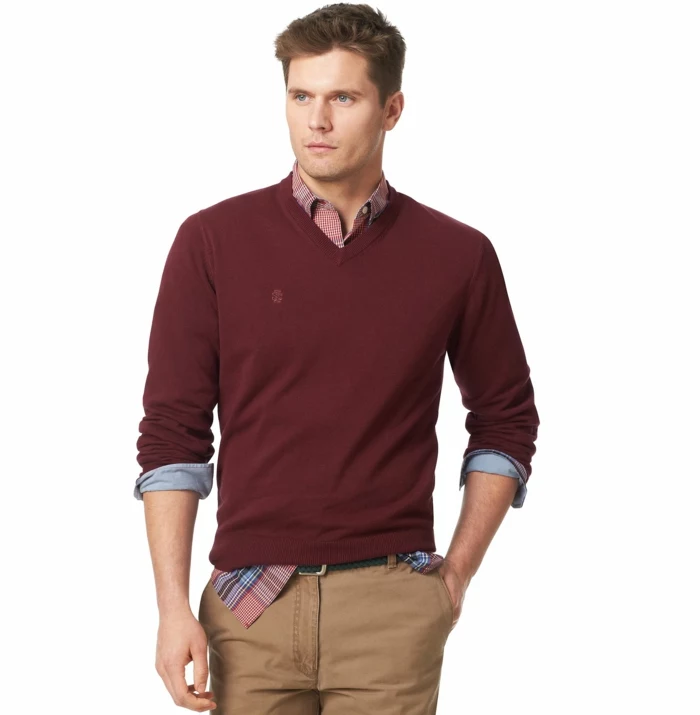
A common mistake: Forgetting to remove the small ‘X’ shaped tacking stitches on the back vents of a new blazer or sport coat. These are put there by the manufacturer to keep the garment’s shape during shipping, not for wearing. The same goes for stitches keeping the exterior pockets sewn shut. Snip them carefully with a small scissor or seam ripper before you wear it out.
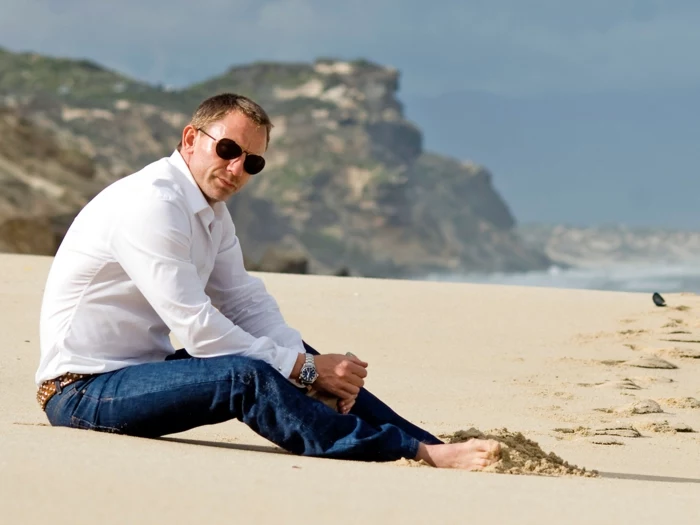
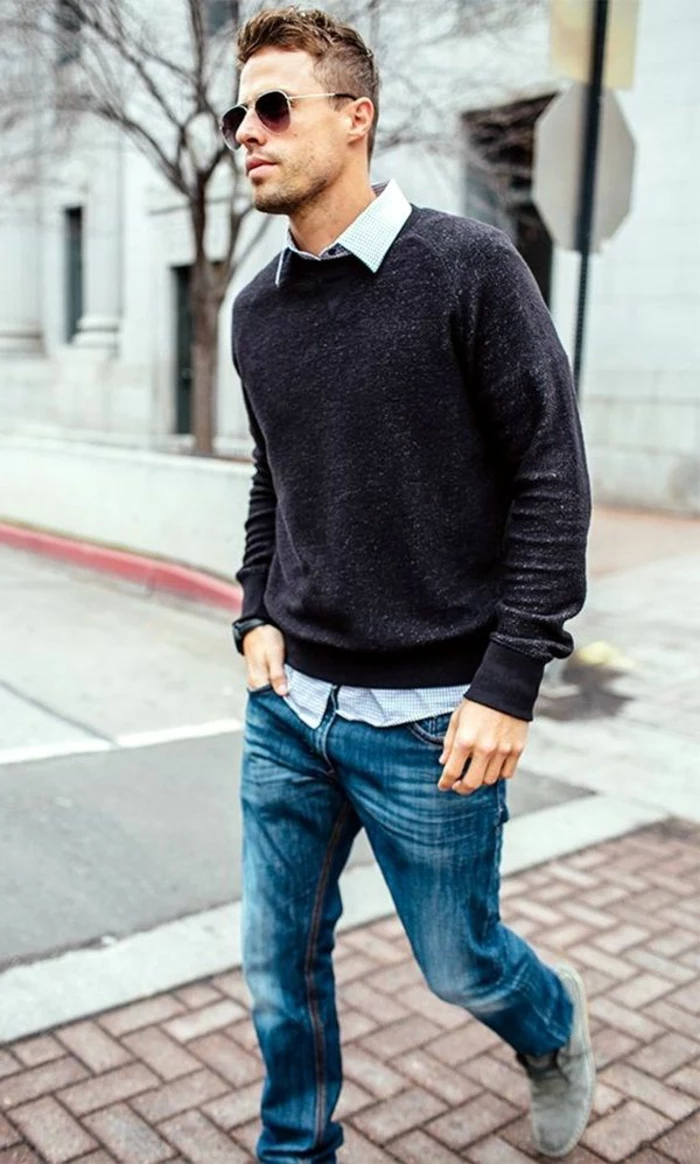
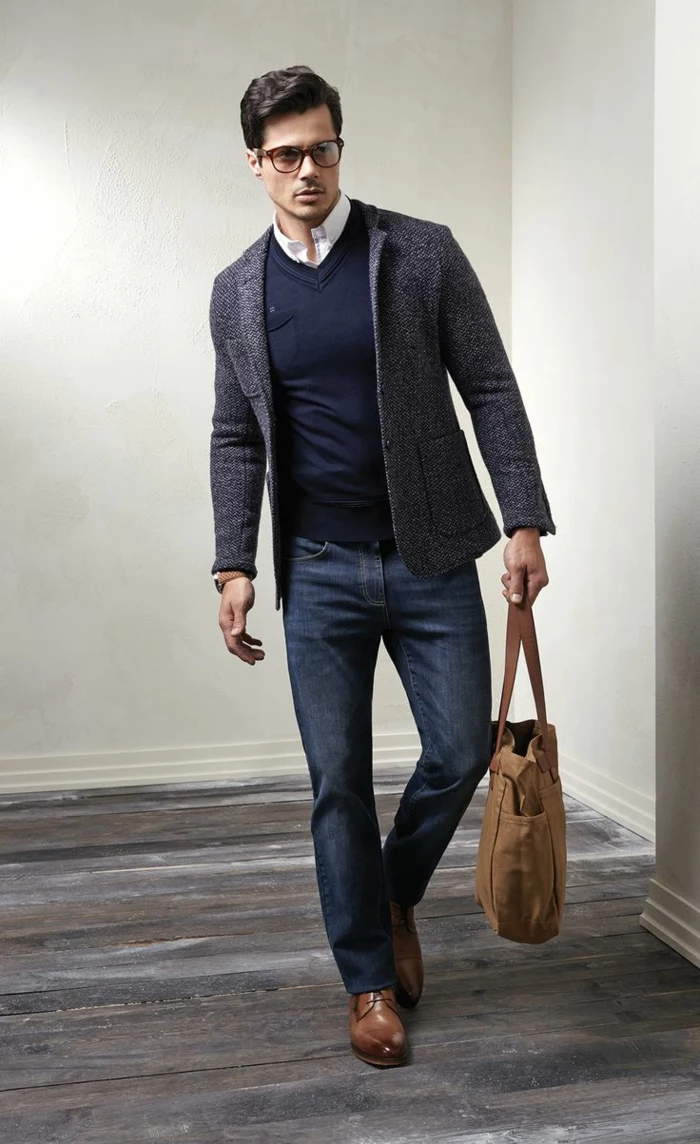
How do you layer without looking bulky?
The key is using thin, high-quality layers. Start with a well-fitting dress shirt. Add a fine-gauge knit, like a merino wool cardigan or vest, instead of a chunky sweater. Top it off with an unstructured blazer made from a lighter material like hopsack wool or a cotton-linen blend. Each layer adds warmth and visual interest without adding excessive bulk.
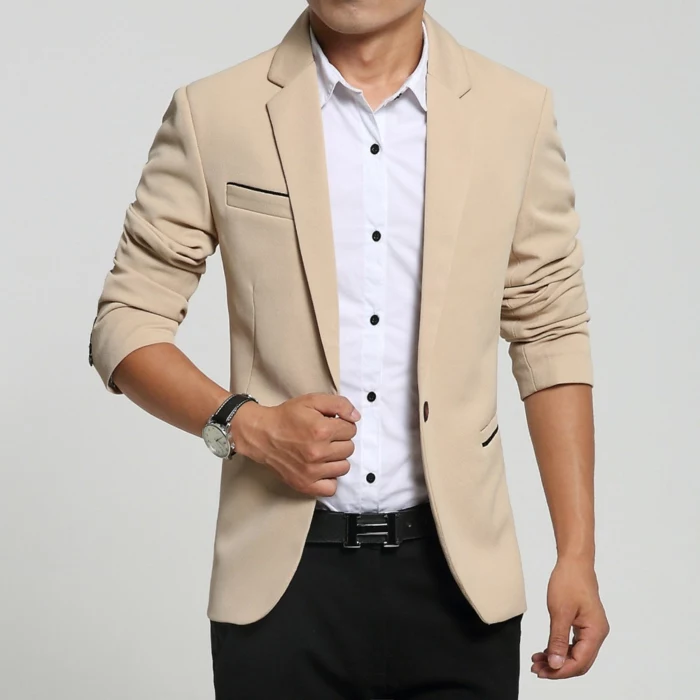
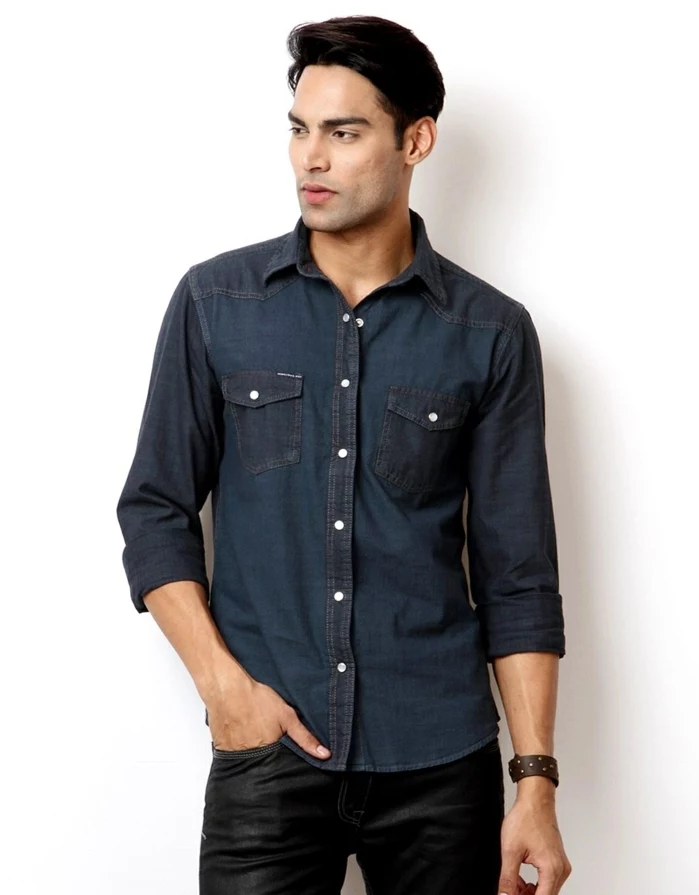
Thinking in terms of ‘cost-per-wear’ can revolutionize your shopping. A $90 pair of shoes that lasts one year costs you $90/year. A $350 pair of Goodyear-welted shoes (like those from Thursday Boot Co.) that lasts five years before needing a $75 resole costs you just $85/year for that period. Investing in quality and durability is often the most budget-friendly choice in the long run.
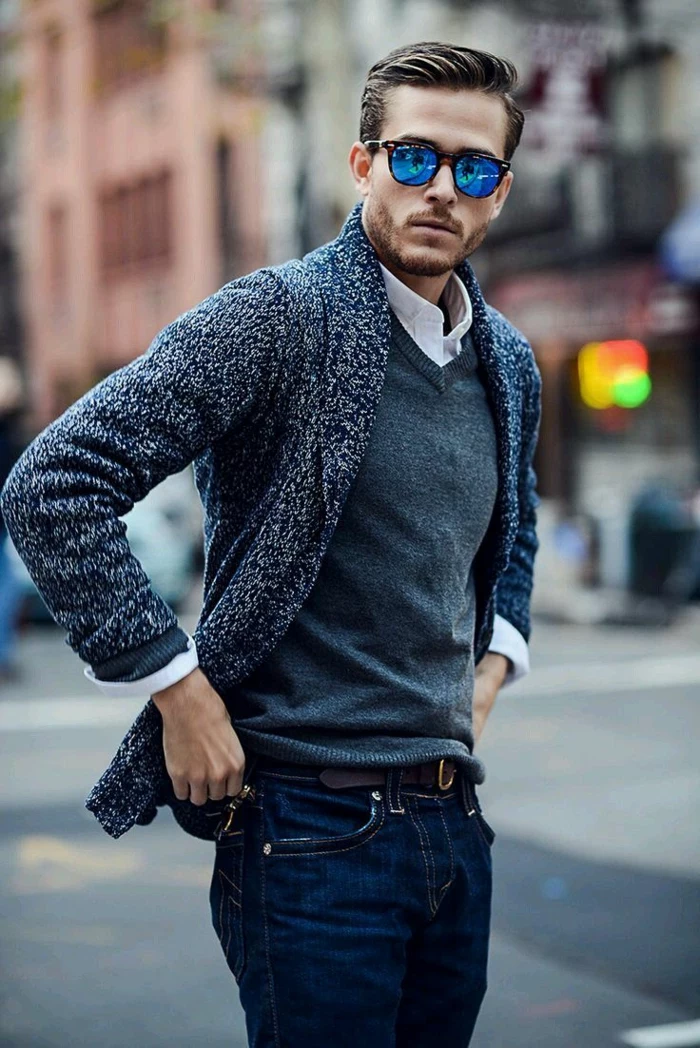
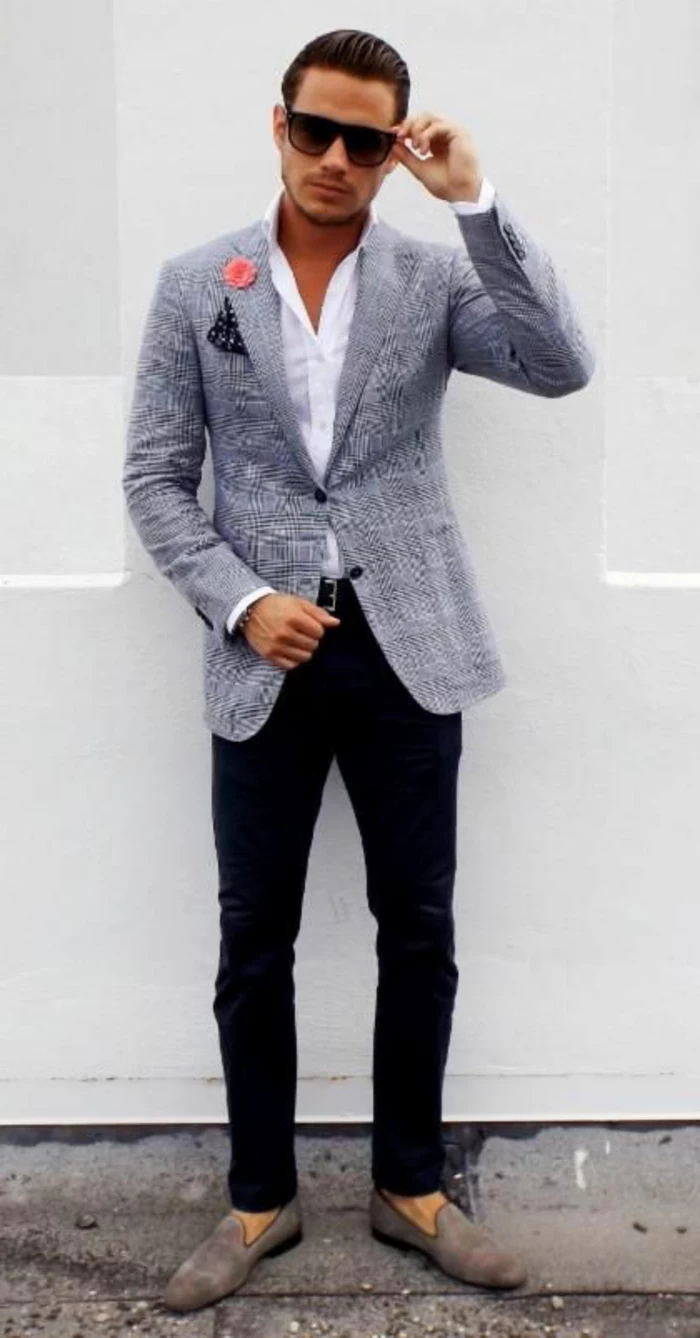
The ‘Un-Suit’ is a modern power move in business casual environments. It involves pairing a blazer and trousers that are different but complementary. Think a navy blazer with medium-grey wool trousers, or an olive cotton sport coat with stone-colored chinos. It’s less formal than a full suit but far more polished than just a shirt and pants.
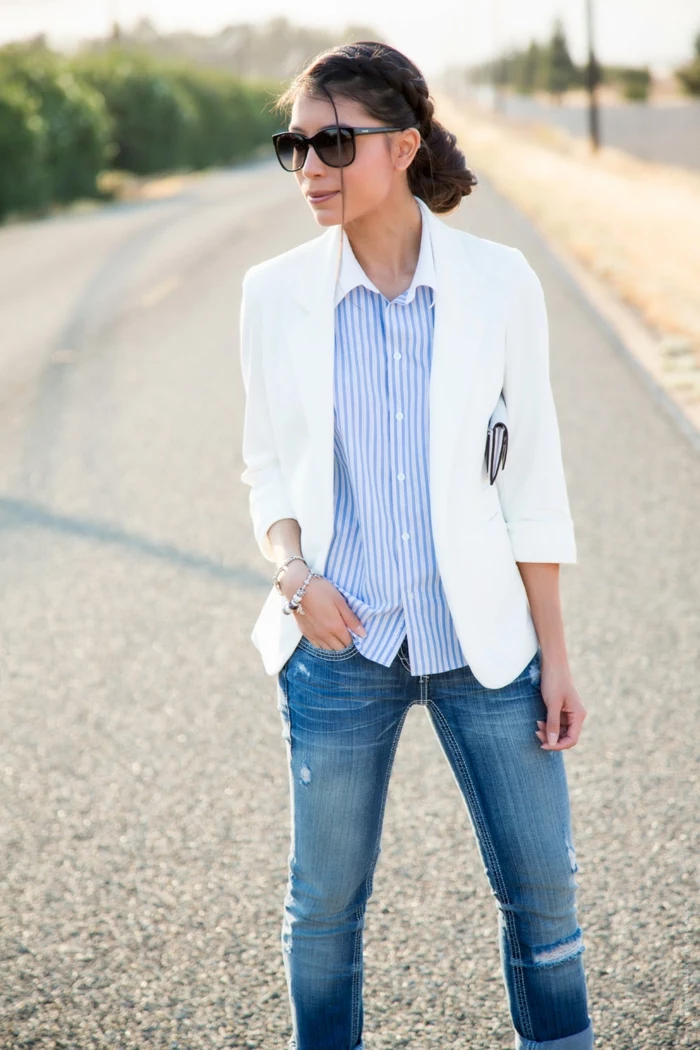
Quick Fit Check: Blazer Sleeves. When standing with your arms at your side, your blazer sleeve should end right at your wrist bone, allowing about a quarter to a half-inch of your shirt cuff to show. This small detail makes a huge difference, signaling that your jacket fits properly and adding a sharp, finishing touch to your look.

